Get insights into the factors that influence prices and make informed decisions for your home heating needs. Don’t overspend – learn what to expect before installing a boiler.
The global boiler market has grown substantially in recent years, with projections indicating a steady upward trend in installations and replacements. Most of this surge is attributable to the upscale real estate market, with developers emphasizing energy-efficient and cost-effective home solutions.
Among them, Brittany Corporation stands out for its commitment to integrating advanced boiler systems in luxury homes. But how much does boiler installation cost?
This blog will look into boiler installation expenses, considering factors from the type of boiler systems to fuel sources, ensuring homeowners are well-informed when making their next investment.
Table of Contents:
- How much does it cost to install or replace a boiler?
- How much does a new boiler cost?
- How do different fuel sources affect the overall cost of a new boiler?
- How much does it cost to switch to a different fuel source?
- How does boiler size affect cost? How does boiler efficiency affect cost?
How much does it cost to install or replace a boiler?
In the Philippines, the cost to install or replace a boiler is influenced by various factors, including the type and size of the boiler, its fuel source, and labor costs.
Typically, installing a new boiler in a home costs approximately ₱200,750 (equivalent to $3,650). The price range for boiler installation often spans from ₱154,000 ($2,800) up to ₱242,000 ($4,400). For high-end projects, especially those requiring removing an old boiler, the cost can reach ₱275,000 ($5,000) or even more.
It’s essential to note that the final expense for your boiler project will hinge on the specific type and size of the boiler you opt for, the fuel it utilizes, and the prevailing labor rates in your locality.
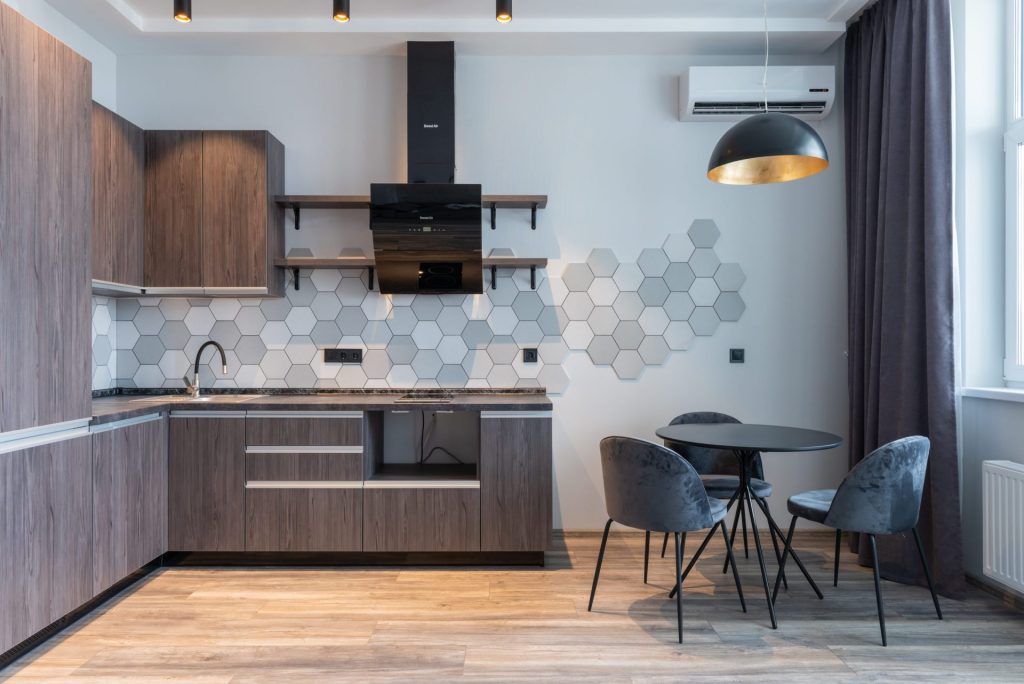
How much does a new boiler cost?
When contemplating boiler replacement costs in the Philippines, understanding the expense of a new unit is paramount. New boilers typically range from approximately P99,000 to P242,000, with the exact cost depending on the type and model you’re leaning toward.
With options like a combination boiler, a system boiler, or a standard boiler, each has distinct advantages and disadvantages tailored to various needs. Deciding on the correct boiler costs hinges on the type and the specific requirements of the space it’s intended for.
While apartments and smaller homes might find a compact electric or combination boiler sufficient, larger residences or buildings generally necessitate a standard boiler. When considering upgrading or replacing an existing boiler, it’s essential to factor in the initial investment and potential long-term savings to make an informed decision.
Combination Boilers
Combination boilers, commonly known as combi boilers, are the most popular type of boiler in many households. They provide heating and hot water directly from the mains without needing a separate tank. When you turn on a hot tap, the combi boiler heats water on demand, making it highly efficient. This means there’s no need to wait for a tank to fill up, but the flow rate might be limited if multiple taps are used simultaneously.
System Boilers
System boilers, unlike combi boilers, require a separate cylinder for storing hot water, but they don’t need a water tank as the heating and hot water systems are built into the boiler itself. This setup is beneficial for homes with more than one bathroom, as it can simultaneously deliver hot water to multiple taps. System boilers are known for their fast response times and the ability to maintain water pressure.
Standard Boilers
Standard, conventional, or regular boilers require a cylinder to store hot water and a tank to feed the system and keep it at the right pressure. This traditional system is often found in older homes, and while it’s excellent for homes with two or more bathrooms and a higher water demand, it does take up more space due to the separate tank and cylinder.
How do different fuel sources affect the overall cost of a new boiler?
The boiler replacement cost can vary significantly based on your chosen fuel source. Generally, the most commonly utilized fuel for boilers is natural gas. Installing a gas combi boiler tends to be more affordable upfront, and running costs are often lower than other fuel sources, making it a popular choice for homeowners.
Alternatives like oil, electric, or biomass boilers might be considered if your home isn’t connected to a gas line. While electric boilers have minimal installation costs and are highly efficient, their running costs can be higher due to electricity prices. On the other hand, oil boilers can be more expensive to install and maintain but can be a viable option in areas where gas is not readily available.
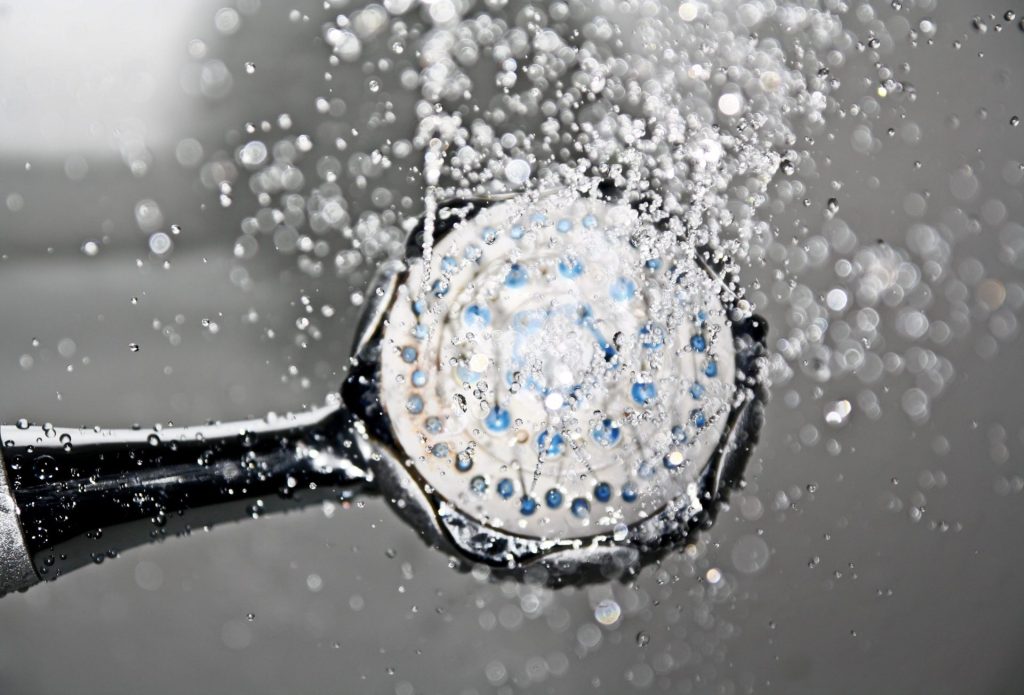
In luxury residential areas like those developed by Brittany Corporation, the choice of boiler replacement becomes integral to ensuring consistent comfort. For instance, properties in Portofino Alabang, Portofino Heights, and Amore at Portofino are designed to emphasize superior living standards, making efficient and cost-effective heating solutions essential.
Given these high standards, many homeowners in these upscale neighborhoods, including Vista Alabang, opt for a new combi boiler due to its combined efficiency and space-saving design.
In conclusion, while the initial boiler replacement and installation costs are significant, it’s crucial to consider the long-term expenses and efficiencies associated with each fuel type. Investing wisely in a boiler that suits the specific needs of your property, especially in elite locales developed by companies like Brittany Corporation, ensures immediate comfort and long-term savings.
How much does it cost to switch to a different fuel source?
Switching to a different fuel source involves various cost factors, including infrastructure modifications, equipment replacement, fuel prices, and potential regulatory implications. Initial investment might be substantial, especially when transitioning from traditional to renewable sources.
Costs also fluctuate based on region, fuel availability, and technology maturity. However, long-term benefits such as reduced operational costs, environmental impact, and government incentives can offset initial expenses. Conducting a comprehensive cost-benefit analysis to determine such a switch’s viability and return on investment is crucial.
How does boiler size affect cost?
The size of a boiler plays a pivotal role in determining its cost, with larger units generally being more expensive than their smaller counterparts. A conventional boiler typically serves larger homes with multiple bathrooms tends to cost more than compact boilers designed for smaller spaces. Additionally, the fuel source for the boiler can also influence the price.
Oil boilers may have different pricing structures than those powered by natural gas. When you’re in the market for a new boiler, matching the boiler’s size with the property’s heating and hot water demands is essential, ensuring efficiency and cost-effectiveness.
Interestingly, with the recent surge in house and lot properties for sale in the Philippines, prospective homeowners are paying keen attention to the quality and efficiency of installations like boilers. Many of the most beautiful houses in the Philippines are now equipped with top-tier boiler systems, reflecting a blend of aesthetic appeal and functional excellence.
This trend further underscores the importance of selecting the right boiler size for specific house and lot for sale listings, ensuring future residents enjoy optimal heating solutions tailored to their luxurious living spaces.
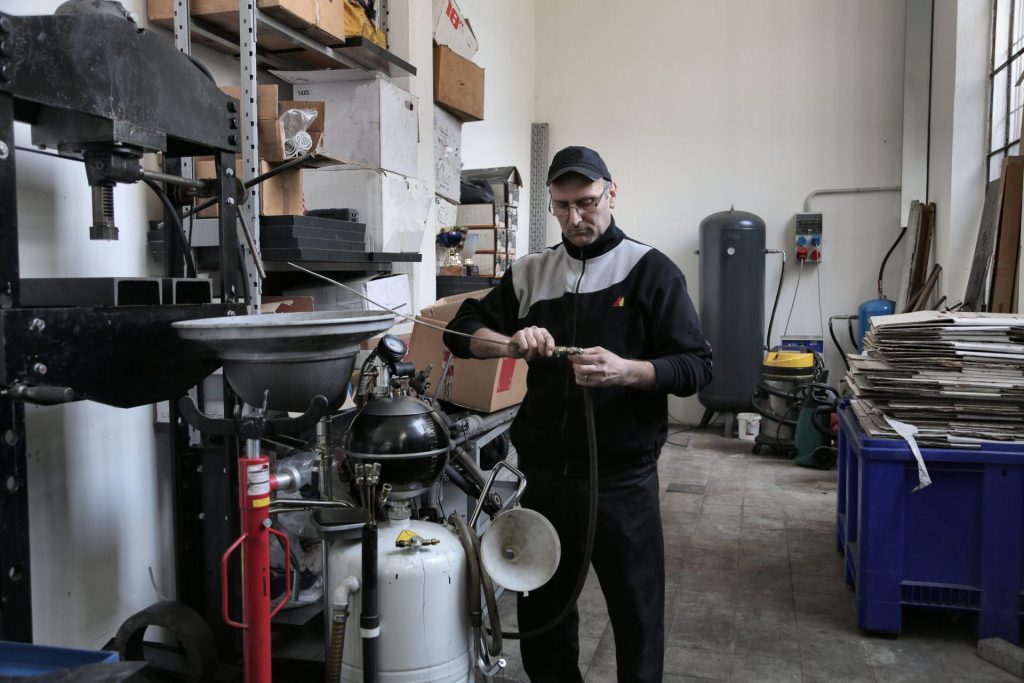
How does boiler efficiency affect cost?
Boiler efficiency is pivotal in determining the long-term costs of heating your home. Gas boilers have undergone significant advancements to become more energy-efficient, meaning they utilize more energy to produce heat.
A highly efficient boiler system minimizes wastage, leading to reduced fuel bills. While the initial investment for such efficient boilers might be higher, the savings on monthly energy bills quickly compensate for the upfront cost.
Electric boilers, known for their near 100% efficiency ratings, convert all the electricity they consume into heat. However, electricity often comes at a higher cost per unit than gas, making the operational costs potentially higher than gas boilers.
In contrast, a system boiler, though efficient in delivering hot water to multiple outlets simultaneously, can vary in efficiency based on its design and age. Balancing the initial costs with the anticipated efficiency-related savings over the boiler’s lifespan is essential when choosing a boiler.
Suggested Read: Radiant Floor Heating: The Secret To Heated Floors in Luxury Homes
Suggested Read: Ramen Lovers Unite: Brittany Corporation Top Picks
Suggested Read: Flooded Car? Check For These 10 Common Problems
Suggested Read: Spanish Household Energy Consumption Patterns
Suggested Read: Fuel Surcharges And How They Affect Plane Fair
Learn our comprehensive guide on in-ground pool costs to explore your options! Whether it’s concrete, fiberglass, or vinyl liner pools, we break down the initial installation costs, long-term maintenance, and the pros and cons of each material, helping you make an informed decision for your backyard oasis.
The tropical climate of the Philippines makes it an ideal location for residential in-ground pools. A dip in the clear waters is not just a luxury but often a necessity to beat the heat during sultry days. Homeowners can feel overwhelmed when it comes to installing a home system. The cost, potential hidden charges, and determining which company offers the best value for money can all add to the uncertainty.
This article will offer an in-depth look into inground pool costs in the Philippines, providing a comprehensive breakdown of expenses and factors that influence them.
Table of Contents:
- What is the cost of constructing an in-ground pool?
- What expenses are associated with labor and installation for an in-ground pool?
- What are the costs of swimming pool materials?
- How much are pool filtration and heating systems priced?
- Which additional pool features can influence the overall cost?
What is the cost of constructing an in-ground pool?
As the demand for house and lot properties for sale increases in the Philippines, so does the desire for luxurious amenities. One of the most sought-after features in the most beautiful houses in the Philippines is an inground swimming pool.
On average, constructing the 20,000-liter inground pool cost around Php550,000 to Php3,300,000, with an average cost of Php1,375,000. However, it’s essential to note that in the Philippines, contractors may quote you between Php25,000 and Php45,000 per square meter for inground pools. The price may fluctuate based on the location, style, and whether you opt for fiberglass or concrete pools. This estimate encompasses labor, materials, and often a six to ten-year warranty.
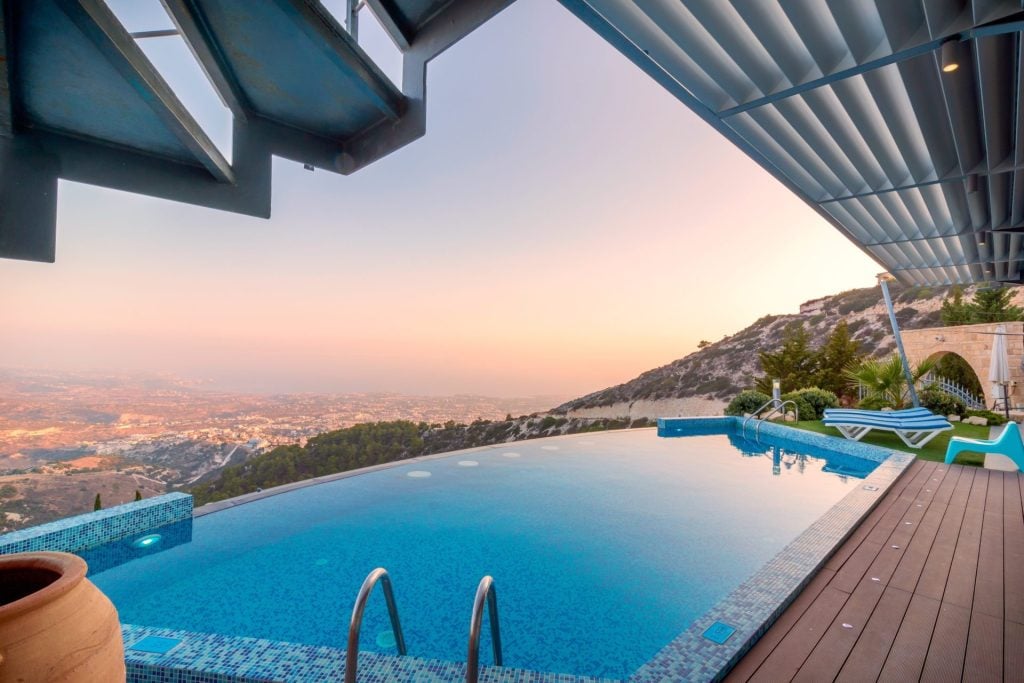
Given this information, it’s clear that while investing in an inground swimming pool can be pricey, the aesthetic and functional benefits it brings to a property can be immense, especially for those eyeing the most beautiful houses in the Philippines. Whether you’re exploring house and lot properties for sale or merely upgrading your current residence, considering this addition can significantly elevate your home’s value and appeal.
What expenses are associated with labor and installation for an in-ground pool?
Inground pool installation is a significant home improvement project involving various labor and materials expenses. The primary cost determinant for inground pool installation is the pool’s size and the materials used.
A concrete pool typically incurs higher labor and installation costs than other types due to its complexity and durability. Depending on the design, features, and finishes, pool contractors often charge between PhP 25,000 and PhP 45,000 per square meter. This pricing includes excavation, reinforcement, concrete pouring, and finishing touches.
Another significant expense associated with inground pool installation is labor. The intricate process requires skilled professionals, from excavation experts to plumbers and electricians. The installation process can span anywhere from six to 12 weeks, during which the labor costs accumulate.
It’s vital to account for these expenses when budgeting for your pool project, as labor can make up a substantial portion of the overall cost.
What are the costs of swimming pool materials?
Swimming pools are a popular addition to many homes, providing a space for relaxation, exercise, and entertainment. The cost of installing an inground pool largely depends on the material chosen, with three primary options available: concrete, fiberglass, and vinyl liner pools.
When estimating inground pool installation costs, one must consider the initial cost of the pool shell and the long-term maintenance and potential repair expenses associated with each material.
Concrete Pools
Concrete pools cost around $30,000, including installation, and offer homeowners a durable and customizable pool option.
- Pros:
- High durability and longevity.
- It can be customized in shape, size, and depth.
- Allows for more intricate designs and features like vanishing edges or beach entries.
- Cons:
- Requires more frequent and expensive maintenance, such as acid washing and potential resurfacing.
- Longer installation time compared to other materials.
- Can be rough on the feet and may harbor algae more easily if not properly maintained.
Fiberglass Pools
Similarly priced to concrete pools at around $30,000, including installation, fiberglass pools offer a sleek and smooth finish.
- Pros:
- Quick and easier installation process.
- Smooth surface, which is gentler on the feet and reduces algae buildup.
- Generally lower maintenance costs over its lifespan.
- Cons:
- Limited in size and shape based on pre-manufactured molds.
- Potential for cracks in colder climates due to freeze-thaw cycles.
- Repairing the gel coat finish can be challenging if it gets damaged.
Vinyl Liner Pools
A more budget-friendly option, vinyl liner pools, including installation, come at approximately $25,000.
- Pros:
- Cost-effective both in initial installation and ongoing maintenance.
- Soft, smooth surface.
- Variety of liner patterns and designs available.
- Cons:
- Liners need to be replaced every 5-10 years, incurring additional costs.
- Vulnerable to sharp objects, which can lead to punctures and leaks.
- Limited lifespan compared to concrete and fiberglass pools.

While all three types of inground pools have their own advantages and drawbacks, your final choice will largely depend on your budget, desired aesthetics, and long-term maintenance considerations.
It’s essential to weigh the initial installation costs against potential long-term expenses and the usability of the pool to make an informed decision best suited for your needs.
How much are pool filtration and heating systems priced?
Swimming pools, especially inground pools, require efficient filtration and heating systems to ensure optimal water quality and temperature. One of the essential components of a swimming pool system is the pool pump, which drives water through a filter to maintain cleanliness.
Depending on their energy source, these pumps are priced between Php5,500 and Php55,000. In conjunction, pool filters, which play a pivotal role in keeping the pool water clear, are valued between Php11,000 and Php38,500.
The type of filter mainly depends on the specifics of the swimming pool, so consultation with a contractor is recommended to determine the ideal choice for your concrete pool or other pool types.
A pool heater becomes indispensable for those who enjoy their inground swimming pool, even during cooler months.
Pool heaters, including installation costs, can range from Php82,500 to Php192,500. While the initial pool cost might seem significant, the long-term benefits of a heater can justify the investment, ensuring consistent water temperature and extending the usability of the pool throughout the year.
Which additional pool features can influence the overall cost?
When considering adding features to a pool, it’s crucial to know the potential costs, especially when planning a budget. Diving boards can range from Php16,500 to Php33,000.
Installing fencing may cost around Php55,000, while adding waterfalls can range significantly from Php27,500 to a hefty Php550,000. For those looking to enhance their pool’s ambiance, lighting fixtures can vary between Php8,250 to Php41,250 each. Integrating a hot tub can cost anywhere from Php825,000 to Php1,100,000 for a luxurious touch.
The type and style of the pool itself can influence the overall expenditure. For example, lap pools, designed primarily for exercise and training, differ in cost compared to above-ground pools, which are often less expensive and quicker to install. Fiberglass pools, known for their durability and smooth surface, can have a different price point due to the materials and installation processes involved. Pool covers are also a good consideration when building one.
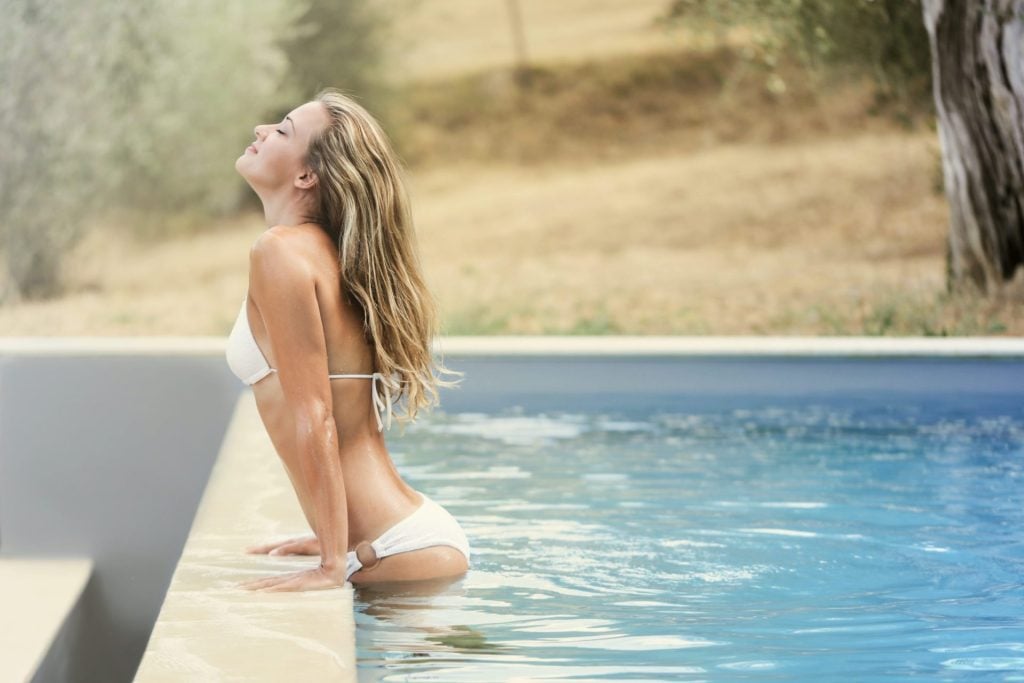
Final Thoughts
In-ground pools have always been seen as a hallmark of luxury and a symbol of upscale living. Their costs vary widely based on size, location, design, and other considerations. As potential pool owners venture into the market, understanding these nuances is crucial to making informed decisions.
When we talk about luxury and refined living, Brittany Corporation’s properties come to mind. Locations like Crosswinds Tagaytay and Alpine Villas Tagaytay epitomize exclusivity and grandeur, nestled amidst nature’s beauty.
The exquisite Alpine Villas Crosswinds stand out with its unparalleled charm, presenting the epitome of luxurious living. These properties are a true testament to the fact that luxury comes in various forms – a serene home in a picturesque location or a pristine in-ground pool in your backyard.
Suggested Read: A Guide To Keeping Your Swimming Pools Safe & Clean
Suggested Read: Swimming Pool Patio Ideas For Your Luxury Home
Suggested Read: Homes With Water Features For Aesthetics
Suggested Read: Door Installation Cost in the Philippines
Suggested Read: Concrete Patio Cost
Learn about the comprehensive breakdown of concrete patio costs. Understand material and labor expenses and see how they compare to alternative patio solutions.
Every homeowner dreams of that perfect outdoor space to entertain guests or enjoy a calm evening, and for many, a concrete patio represents the ideal solution. But as with any home improvement project, one of the first questions asked is, How much is this going to set me back?
Brittany Homes has crunched the numbers from material expenses to labor costs and comparisons with alternative patio options.
Table of Contents:
- What is the price for laying a concrete patio?
- How much are the materials for a concrete patio?
- What are the expenses associated with labor for a concrete patio installation?
- How is a concrete patio installed?
- What’s the price difference between a paver patio and a concrete patio?
What is the price for laying a concrete patio?
In the Philippines, the cost of laying a concrete patio can vary significantly based on the size and design. On average, concrete patio installation ranges from Php275 to Php550 per square foot. For a standard 200-square-foot area, you’re looking at an investment of Php55,000 to Php110,000 for a basic concrete slab.
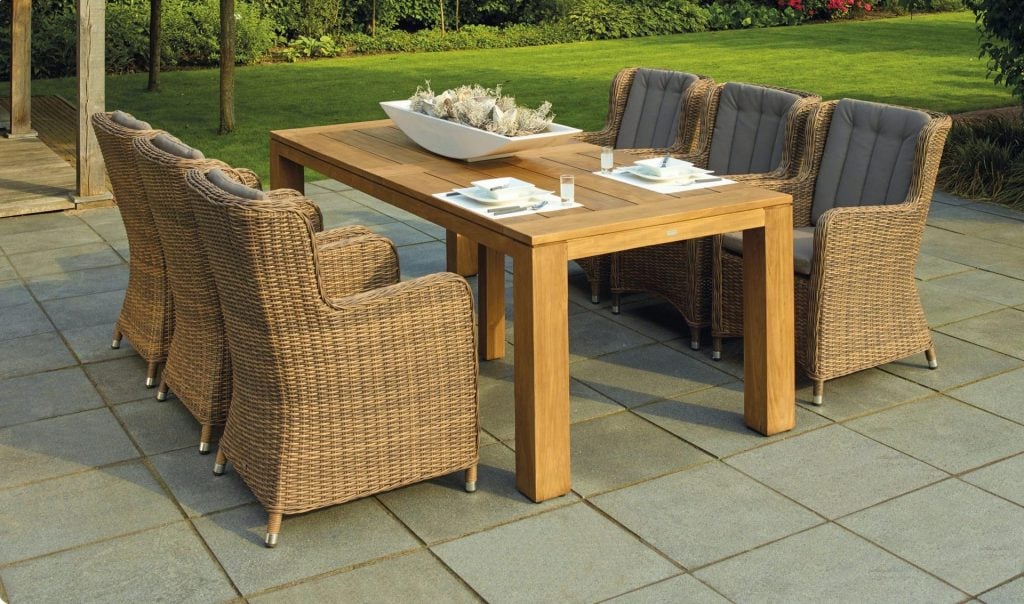
However, for those seeking a more upscale look with special color treatments or designs, the cost can go up to Php 825 per square foot. This means for a high-end design on the same 200-square-foot space; the expense could escalate to over Php330,000.
Whether you opt for poured concrete or concrete, pavers can also influence the price. It’s essential to consult with concrete contractors to get a precise estimate based on your preferences. Consider factors such as the choice of materials, design intricacies, and the quality of workmanship when budgeting for concrete patios.
What is a Concrete patio?
Concrete patios are popular for outdoor spaces, offering durability, versatility, and aesthetic appeal. These flat, solid surfaces create a stable foundation for various activities, from hosting barbecues to relaxing in the open air. Concrete patios can be customized to individual preferences, ranging from simple poured slabs to intricate stamped or stained designs.
One of the key advantages of concrete patios is their longevity. When properly installed and maintained, they can last for decades, making them a cost-effective choice in the long run. They are also relatively low-maintenance, requiring periodic sealing and occasional cleaning to preserve their appearance.
Concrete patios offer the flexibility to incorporate different finishes and colors, allowing homeowners to achieve a wide range of looks, from rustic to contemporary. Whether considering a small, budget-friendly patio or an expansive, decorative outdoor space, concrete patios offer a versatile and enduring solution for enhancing your home’s outdoor living area.
How much are the materials for a concrete patio?
Poured and stamped concrete tend to be more budget-friendly options. These materials usually come around Php 110 to Php 165 per square foot. Adding some aesthetic flair with stains to your concrete patio can increase the total project cost by another Php 55 to Php 220 per square foot.
Most concrete patios in the Philippines will cost about Php 110 to Php 165 per square foot for a plain concrete slab. If you opt for a stamped concrete patio or a stained concrete patio with a bit more design, expect the cost to be higher, around Php 165 to Php 385 per square foot. Remember these figures when planning your concrete patio project to ensure it aligns with your budget and design preferences.
What are the labor expenses for a concrete patio installation?
Labor expenses for concrete patio installation in the Philippines generally cost from Php 220 to Php 440 per square foot. These expenses vary based on complexity and the concrete contractor’s skill level. Some contractors may charge by the hour instead of per square foot, further influencing the overall cost.
One crucial factor that affects labor expenses is concrete removal. If you have an existing patio that needs demolishing and removing before the new installation, this process can add to the labor costs. Plan on decorative concrete finishes or intricate designs for your outdoor living space. The labor expenses may be higher due to the specialized skills and extra time required.
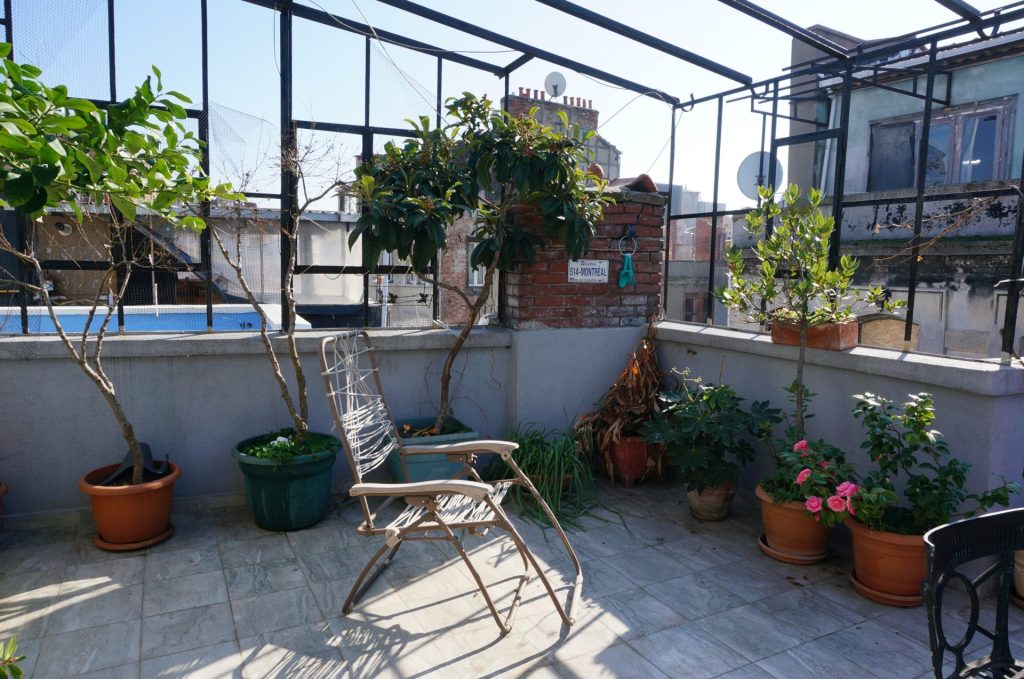
Accessibility plays a significant role in determining labor expenses. If the patio location is challenging to reach or requires additional effort to transport materials and equipment, this can drive up the installation costs. Therefore, homeowners must clearly communicate their project details and expectations with concrete contractors to receive accurate quotes and ensure a smooth and cost-effective installation process.
How is a patio installed?
Installing a concrete patio involves several essential steps to ensure a sturdy and long-lasting outdoor living space. Here’s a simplified breakdown of the process:
1. Site Preparation: The first step in installing a concrete patio is to prepare the site. This includes clearing the area of any vegetation or debris and ensuring that the ground is level. Proper site preparation is crucial for the patio’s stability and durability.
2. Formwork and Reinforcement: Next, wooden or metal forms are set up to define the shape and size of the patio. Reinforcement, typically in the form of steel bars or mesh, is added to strengthen the concrete. This step ensures that the concrete patio can withstand the test of time.
3. Concrete Pouring and Finishing: Once the forms and reinforcement are in place, concrete is poured into the designated area. Concrete contractors use various techniques to achieve the desired finish, such as smoothing the surface or adding decorative patterns. It needs time to cure after the concrete is poured, which usually takes several days.
The installation details may vary depending on your project’s size and design. Working with experienced contractors who can provide expert guidance and ensure that your concrete patio is installed correctly, meeting your aesthetic preferences and structural needs, is essential.
What’s the price difference between a paver patio and a concrete patio?
When comparing the cost of different patio options in the Philippines, it’s important to note that paver and concrete patios come with varying price tags. On average, including labor and materials, a paver patio will generally set you back at approximately Php 110,000, while a concrete patio tends to be more budget-friendly at around Php 82,500. This means paver patios cost about 33% more than their concrete counterparts.

The price difference between these two patio choices reflects factors such as the materials used and the complexity of installation. Paver patios often require more intricate craftsmanship and a higher quantity of materials, leading to a slightly higher cost.
Concrete patios, on the other hand, offer a cost-effective option for homeowners looking to create a functional and attractive outdoor space. Consider these considerations when deciding which patio type aligns best with your budget and aesthetic preferences.
Final Thoughts
Understanding the cost of a concrete patio is crucial when planning your outdoor oasis in the Philippines. Whether you’re considering a simple concrete slab or an intricate stamped design, knowing the expenses can help you make informed decisions for your home improvement project.
Remember that Brittany Corporation properties, such as Bern in Baguio and Forresta, offer stunning residential options where you can create your dream concrete patio. By budgeting wisely and working with experienced contractors, you can transform your outdoor space into a comfortable and inviting retreat that adds value to your property.
Go ahead and start on your concrete patio journey, knowing that you can enjoy the beauty of the outdoors right at home with the right choices.
Suggested Read: Swimming Pool Patio Ideas For Your Luxury Home
Suggested Read: Concrete Grades And Where To Use Them
Suggested Read: Homes With Water Features For Aesthetics
Suggested Read: How To Furnish Your Condo Patio
Suggested Read: Paver Patio Installation Cost
When purchasing a home, adding more expense may seem like the last thing you want to do, but most real estate experts advise hiring a professional home inspector to get a better picture of the property’s condition and any potential issues.
What is a Home Inspection?
A home inspection is a much more thorough inspection and examination of the condition of a residential property, typically performed by a qualified professional known as a home inspector. The purpose of a home inspection is to provide the prospective buyer or homeowner with a detailed and unbiased assessment of the property’s overall condition, including its structural integrity, safety, and functionality.
During a home inspection, the inspector will typically assess the following aspects of the property. And after completing the inspection, the home inspector typically provides a detailed report to the client, which may include photographs and descriptions of any issues or concerns discovered during the the inspection process. This report can be valuable for buyers in negotiating repairs or price adjustments with the seller or for homeowners in prioritizing maintenance and repairs.
It’s important to note that a home inspection is not a guarantee against future issues, but it provides valuable information about the current condition of the property, helping home buyers make informed decisions and ensuring they are aware of any potential repairs or maintenance that may be needed.
Home Inspection cost
The cost of a home inspection might vary depending on a number of factors, but the average cost is around 22,700 Php. As stated by the Home inspections, typically average home inspection cost between 17,000 Php and 28,400 Php. Your local rates, the size and age of your house, and whether you decide to have extra tests done will all affect the overall cost of the inspection.
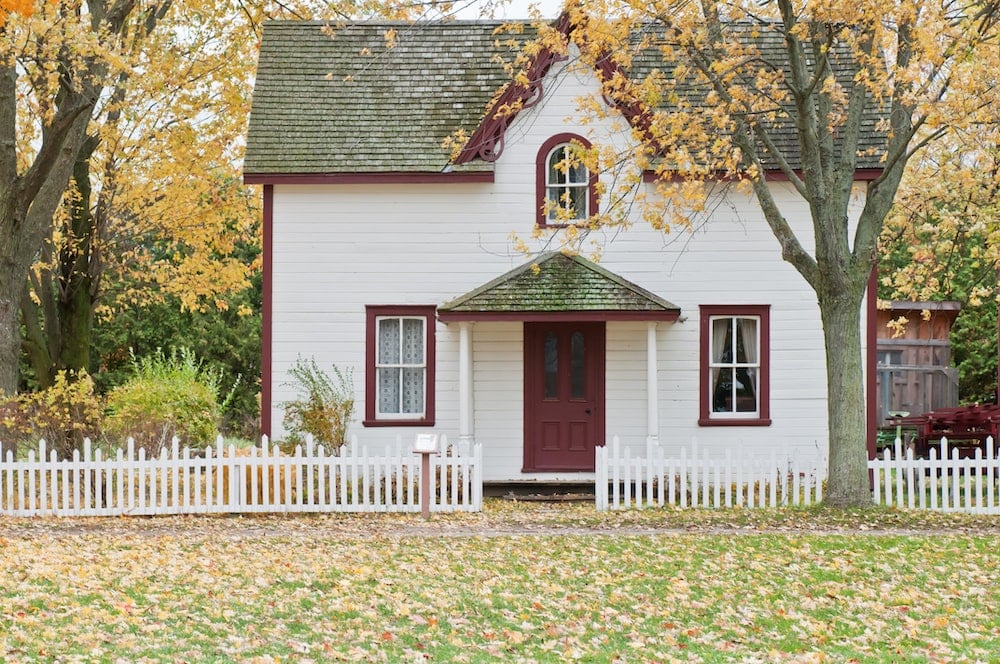
How is a home inspection charged?
It’s a good idea to confirm fees with your home inspector in advance because different home inspectors across the nation have varied guidelines for how much to charge clients. The cost of an inspection is frequently determined by the square footage of the home, and larger homes may incur higher costs. Older homes can require more time and attention to inspect, therefore certified home inspectors may charge a premium price. Yet more inspectors bill by the hour. Remember that if your home is larger, older, or contains features that the company deems extra, it may cost more to check it than the base price provided by the inspection firm.
What does a Home inspector do?
It typically takes a home inspector two to three hours to visually evaluate the entire house or apartment. After that, he or she will compile a home inspection report detailing the property’s state and any required maintenance. The HVAC, plumbing, and electrical systems of a house are all examined, along with an inspection covers the roof, attic, crawl spaces, basement, foundation, walls, ceilings, floors, windows, and any insulation that may be seen. Additionally, you might want to get the house evaluated for radon, asbestos, or termites. For each of these tests, it’s usually advisable to engage a different specialist, which will obviously cost more.
What questions should you ask before hiring a home inspector?
A professional home inspector should be hired because purchasing a property is a huge decision. Prior to the home buying process and hiring someone, pose the following inquiries to them:
- What is covered by the inspection, and what information is given in the report? You want to be sure the inspection will cover every essential area of the house and give you insightful information.
- Is the inspector licensed by a professional organization that requires its members to meet particular criteria? Inspectors may belong to a number of associations.
- Whether you are the homeowner or a potential buyer, are you permitted to attend the inspection? You should be allowed to attend if the inspector is reputable, as this will make you a better educated party.
What sorts of problems might a home inspector find?
It’s helpful to think about the expenses of different repairs a property may require to put into perspective how much a home inspection can save you in the long run. Nobody likes to purchase a property just to find out a few months later that they have to pay thousands of dollars in unanticipated repairs. All of a home’s problems will be revealed following a home inspection, and the selling price of the property can be modified as a result. However, after an examination, homeowners may relax knowing they won’t face legal action for undiscovered problems.
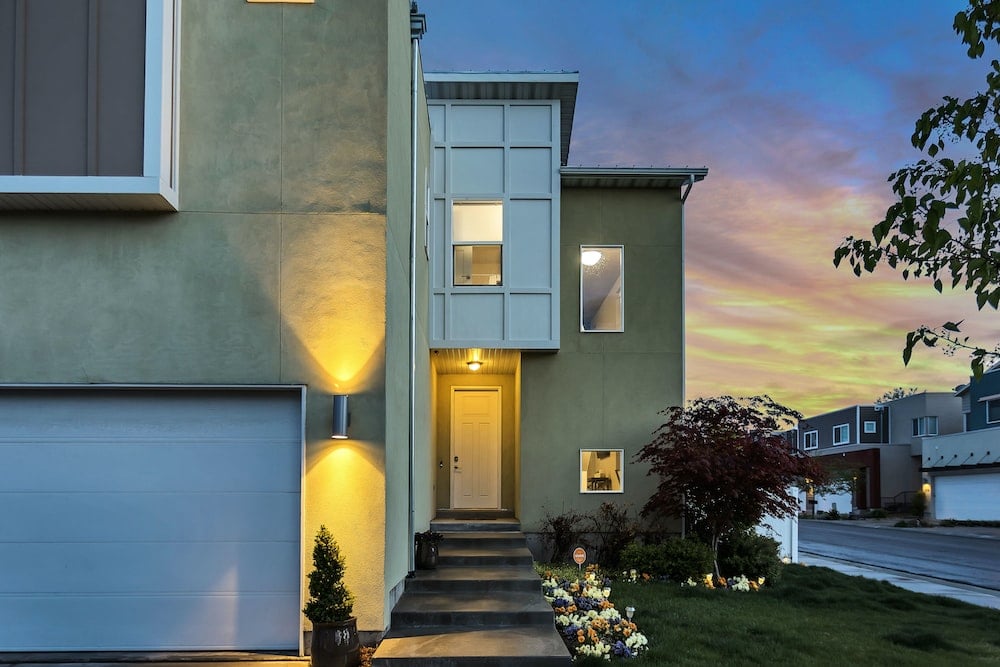
HVAC Issues
The heating and cooling systems of a property should undergo a comprehensive inspection by your home inspector. A new central air conditioning system normally costs 227,000 Php to install, and A/C repairs are about 17,000 Php. The cost of installing a new furnace for the home’s central heating system might be around 204,200 Php. Installation of a water heater normally costs 56,800 Php. Any problems can be discovered by a house inspection before you are forced to deal with inclement weather.
Plumbing Issues
It’s crucial to have reliable plumbing, and a home inspector will be able to quickly identify any issues in the kitchen or bathroom. The national average cost for of installing a toilet is 19,900 Php, and simple plumbing tasks also cost approximately that much. However, repairs for a home’s main water line may cost more than 113,500 Php to make.
Electrical Problems
Having a house inspector check out the electrical system beforehand will assist offer you peace of mind because electrical system issues can be dangerous. For basic services, electrical repairs can cost as little as 17,000 Php and as much as 284,000 Php to completely rewire a property.
Water Damage
A house with water damage may experience foundation issues, mold growth, and other concerns. It might be necessary to replace new carpeting or an other kind of flooring if a home inspector discovers mold growth, for instance, in a home’s flooring. New carpet installation often costs around 85,100 Php, the average price however hardwood floor installation can cost up to 227,000 Php.
Foundation Issues
The foundation of a house should be fixed as soon as possible if there are any problems in order to repair costs and to limit expenditures and prevent more harm. Most foundation repairs cost roughly 312,000 Php, while more significant ones may cost as much as 624,000 Php. One of the most crucial things you can do as a home buyer or seller is to make sure the foundation of the house is in good shape or is receiving the proper care.
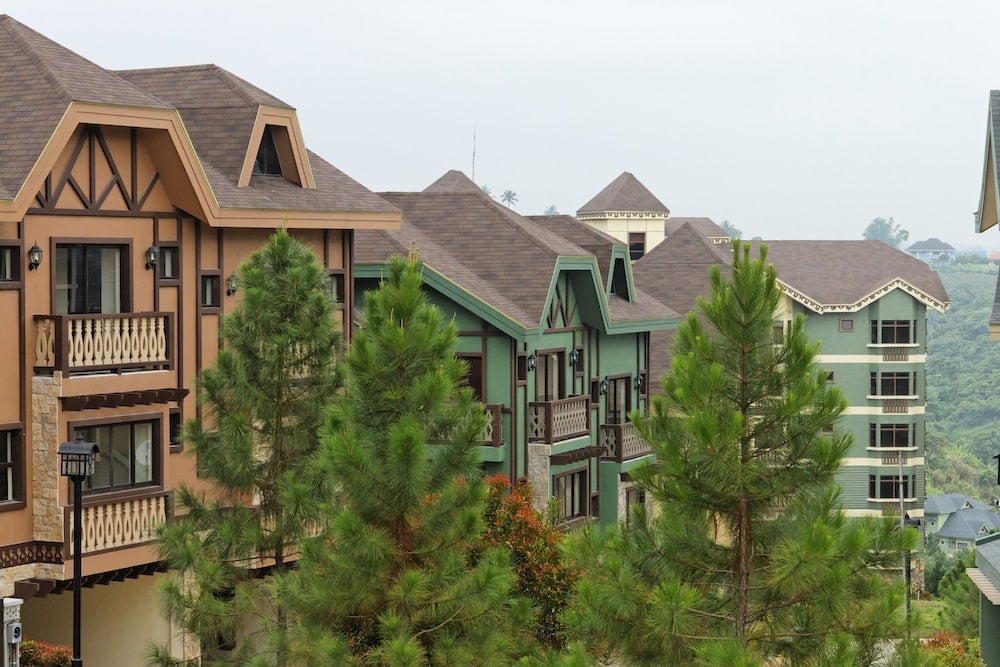
Roof Damage
Another significant issue that you should be aware of is damage to a home’s roof. Depending on the materials you pick, replacing a roof can be expensive; the average cost is roughly 397,000 Php. However, you should take care of any roof difficulties quickly away to avoid suffering from water damage or other related structural issues afterwards.
Windows
Your energy costs can be decreased and you and your home can be safe with windows that seal properly. Your house inspector should check the functionality of the windows and record any insulation problems. A single window replacement costs roughly 28,360 Php, and the cost can quickly increase if there are multiple windows that require repair.
As you can see, significant house repairs are frequently rather expensive. In particular if you’re a first-time homebuyer, hiring a home inspector to uncover any of these problems before you buy a property may help you avoid incurring unexpected charges and offer you confidence. You should feel free to look for a professional home inspection or firm on your own even though your real estate agent could already have a connection with one.
Visit Brittany’s official property page to know more about Brittany’s beautiful thematic offerings or follow us on our Facebook, Instagram, Linkedin, and Twitter accounts!
Suggested Read: Importance Of Proper Water Pressure In Your Home
Suggested Read: Flipping High-End Properties: What To Know
Suggested Read: Top 10 Real Estate Investment Questions
Suggested Read: Safety 101: Fire Code of the Philippines
Suggested Read: Ten Times To Hire A Kitchen Designer
What is the average cost for paver patio installation?
For paver patio installation cost, it ranges between 206,250 pesos to 530,000 pesos. For a standard size, a 400-square-foot landscape would reach a total cost of 308,000 pesos.
Table of Contents:
- What is the average cost for paver patio installation?
- What is a Paver Patio?
- How much do paver materials cost?
- How much is the overall paver patio installation cost?
Many homeowners want their backyard or front yard to be as beautiful as their interior. It gives a lot of benefits not just for the landscape itself but also adds value to the property.
What is a Paver Patio?
Paver Patios are constructed using interlocking pavers that are usually made of concrete. Unlike poured concrete, natural stone pavers, or wood, installing concrete pavers is more convenient and quicker. Concrete pavers usually come in different shapes, sizes, patterns, textures, and colors making it easy to create a patio that complements your home’s architecture and your taste.
The benefits of concrete pavers are their quality and functionality. What is also good about paver patios is that they require minimal maintenance. Regular sweeping and occasional pressure washing are usually sufficient to keep them looking good. Another is that if a paver becomes damaged, it can be replaced individually without disrupting the entire patio. This makes repairs more cost-effective and convenient.
To make sure that you will get all these benefits, it is important to note that you need to consult with a landscaping company and professional paver installers to get the right materials and process for the paver installation.

How much do paver materials cost?
Paver prices vary depending on the patio materials used. The average cost usually ranges from 165 to 605 pesos per square foot. Below is the list of the common paver materials and paver patio cost guide.
Base materials
Base materials are important to ensure that the foundation will be stable and last long. The two common materials used for this are crushed stones and class II road base.
Crushed stone pavers are typically made of crushed granite or crushed limestone with an average of 4-6 inches thick which provides excellent drainage and stability. Class II road-based is mostly installed in busy and heavy-traffic areas including driveways. It is made up of crushed rock ranging in size from fine dust to 34″ chunks which help provide additional strength.
Concrete pavers
Concrete paver is conceivably the most flexible material that can be utilized for patios. Anyone who chooses this particular material will be able to discover the perfect fit for their home because it comes in a huge selection of forms, colors, and patterns. You are free to choose the type and style that suits your aesthetic preferences and project requirements. More importantly, pavers are reasonably priced ranging from 110 pesos to 550 pesos. Additionally, it is straightforward enough that knowledgeable handymen can install the paving themselves without incurring additional charges for labor costs.
Brick pavers
If you want a more classic look to your outdoor area, go for a brick paver patio. In addition to having a conventional and exquisite appearance, it is also reasonably priced, long-lasting, and low-maintenance. The initial investment will be profitable for many years to come because it does not fade or become worn down. Brick has many different potential design alternatives, making it extremely adaptable. Brick pavers cost 300-500 pesos per square foot. Although it is less expensive than other patio pavers materials, it is better to prepare a huge budget because it will also depend on how many pavers are needed.
Stone pavers
Stone is more expensive to employ in installing pavers because it might be challenging to get and work with. But there is no denying its beauty. Long term, it’s a wise decision because the material is very robust and long-lasting. Although it is not as thick as brick pavers or concrete pavers, stone paver costs are higher due to the more difficult quarrying and fabrication procedures. The installation costs more or less 1,000 pesos per square foot.
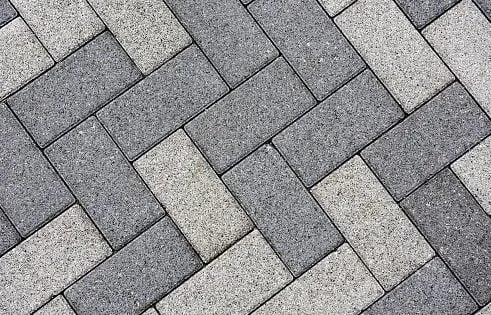
Wood pavers
Wood pavers offer a natural and rustic appearance, which can be especially attractive in outdoor settings. They can add warmth and character to your outdoor space. Different types of wood can be used for wood pavers, each with its own appearance and characteristics. Cedar and redwood are naturally resistant to decay and insects, while tropical hardwoods like ipe are extremely durable and have a rich color. The only con to this type of paver is that over time, wood pavers can fade and weather due to exposure to sunlight and the elements. This natural aging process can add character to the wood but may require periodic staining or sealing to maintain the desired appearance.
Sand
A bedding sand is placed on top of the base material to create a smooth, level surface for the pavers. It’s also used for setting the pavers and filling in the joints.
Joint sand is fine sand swept into the gaps between the pavers after installation. It helps lock the pavers in place and prevent weed growth. Polymeric sand, which hardens when wet, is often used for added stability.
Geotextile Fabric
If you’re concerned about weed growth or settling, you can place geotextile fabric between the base material and the sand layer. This fabric helps prevent weeds from growing through the pavers and can aid in stabilization. The landscaping fabric is typically placed beneath mulch, gravel, or other ground cover materials to create a barrier that inhibits weed growth while allowing proper drainage and air to pass through.
Other tools
You’ll need a variety of tools for the installation process, including:
- Shovel and/or excavator for digging and leveling.
- Rake for spreading and leveling the base material and sand.
- Plate compactor for compacting the base and pavers.
- Rubber mallet or dead-blow hammer for setting pavers.
- Paver saw or brick splitter for cutting pavers to fit at edges and corners.
- Broom for sweeping joint sand into the gaps.
How much is the overall paver patio installation cost?
If you have discussed the factors that may affect the paver patio installation cost with your patio contractor or a paver company, you must know that the given list below must be prepared for.
Labor cost
Your paver patio project can be fairly difficult and call for highly specialized expertise. Make sure you’ve hired the right specialists to build your dream patio for you if you want it to turn out properly. You can design the ideal outdoor area with the aid of a competent professional. Communicate the timetable for building, the number of workers who will be on site, the price per square meter, and a thorough examination of the company’s history are all potential topics for discussion. This is to ensure that every additional cost is worth it. Overall, the labor cost would be more or less 200,00 pesos.
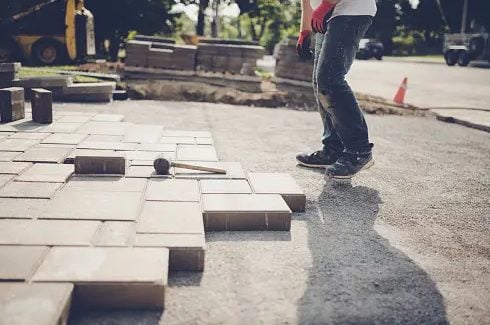
Grading and Landscaping
Depending on the site, you may need to consider landscaping, grading, and possibly drainage solutions to ensure proper water runoff and landscaping around the patio. These costs can vary widely based on your specific needs. Poor installation might still result in floods or pooling, which can be particularly troublesome close to your home’s foundation. Your installation expenses will probably go up if the professional has to perform any additional work to create a properly graded surface. For an average square foot of 400, grading and landscaping would cost 22,000 pesos or more.
Conclusion
A paver driveway or a paver walkway, most homeowners dream of having a spacious outdoor space where children can play, adults can relax, and visitors will be mesmerized.
Visit the house and lot for sale in the south. Promenade in Brittany Santa Rosa will leave you in awe of its English-style house, green hedges, and patios. If you want to know more about this property, read more.
Suggested Read: Swimming Pool Patio Ideas For Your Luxury Home
Suggested Read: Driveway Styles For Your Luxury Home
Suggested Read: How To Furnish Your Condo Patio
Suggested Read: Driveway Maintenance Tips
Suggested Read: Driveway Trends of 2022
Posting a story / social media update during rainy days? Try capturing your current activity – work, family, coffee, Netflix, book, food, etc. using a background of double-pane windows with droplets.
Windows have been essential in our homes — be it single pane windows, hopper windows, or bay windows — they provide protection from hot temperatures and cold air and a platform to enjoy the outdoors even when staying indoors.
You may be one of the many homeowners planning a window installation but struggling with your final budget plan. Since various factors such as window types, window panes, window frames, window material, window style, window location, and labor cost can greatly affect the window installation cost.
With so many window costs, let this article guide you through a smart window installation plan and answer the question of how much window replacement costs. Pick the best window type just as you choose the best condominium for sale and house and lot properties for sale among the most beautiful houses in the Philippines!
Why should you choose the best window type for replacing windows?
Aside from their functional purpose, windows also add to the overall aesthetic design. For instance, replacing windows with glass block windows can give your place an extraordinary aesthetic feel. Take those condominium for sale; you’ll see how bay windows, composite windows, transom windows, and picture windows enhance the property’s aesthetic charm.
Whether your house is currently being constructed and you need new windows or are actively looking for replacement windows, the following tips could help you decide the best window.
Quick tip: Have you checked out these properties for sale? Experience Brittany living and enjoy the luxury life has to offer!

Consider these in a window replacement project
When replacing windows, you should consider these four: window frame, window glass, window installation cost, and functionality. These considerations affect the cost of window installation or simply the average cost for your new windows. Or else, you may consult window companies to design custom windows ranging from jalousie windows to more eye-catching choices such as composite windows.
1. Overall House Design
Make sure that the window panes and window style coincide with the overall concept when having a window installation; just a gentle reminder, the energy cost of replacing windows is much better if you want to save electricity.
Trending modern window designs, which include fixed windows, single-hung windows, double-hung windows, and those that belong to specialty windows, would also be a great window replacement. If you want to experience world-class, your house – including your windows – should be built for world-class. You should check out the most beautiful houses available in the Brittany Corporation.
Check out designs and styles of the most beautiful houses and good deals on house and lot properties for sale in the Philippines.
2. Functionality
Enjoying daylight and feeling the cold air of rainy seasons indoors – this is what window installation are for. Once the window installers upgrade your existing window frames, you must strategize how to maximize them. The most beautiful houses in the Philippines commonly use some of these windows selected based on their functionalities:
a. Fixed windows
As the name implies, you can neither open nor close this window type – as they are purely fiberglass fixed to the walls.
b. Slider Windows
Aside from double-hung windows, picture windows, and energy-efficient windows, you may also opt for this window type! An advantage of this window is that it provides additional ventilation to your house – you can actually feel the temperature outside compared to the most existing windows available.
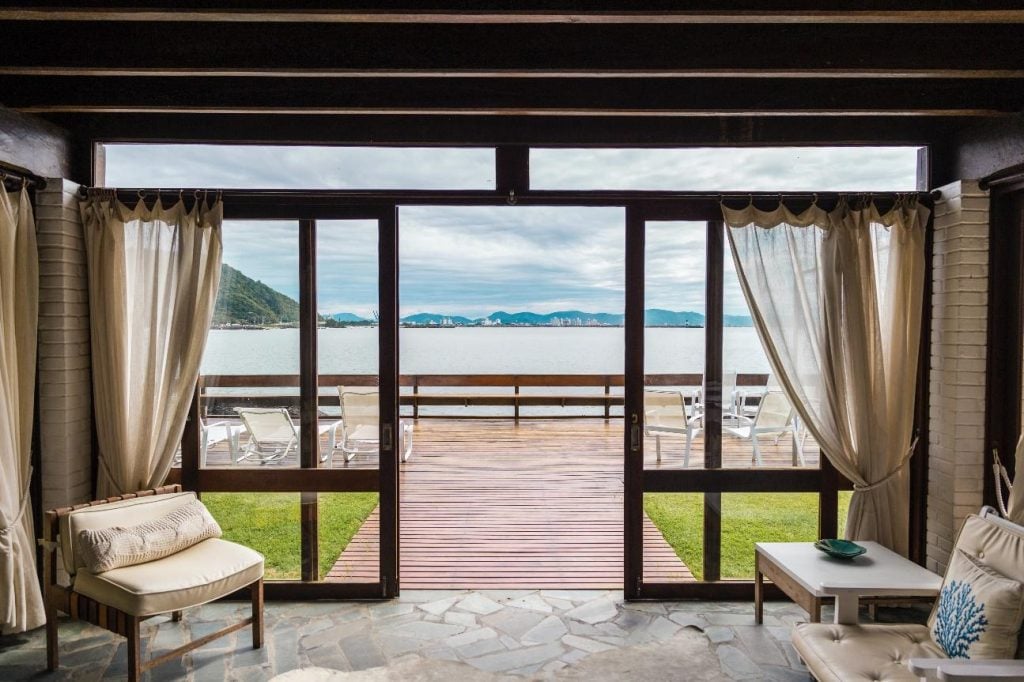
c. Casement Windows
Unlike single-hung windows, bow windows, and casement windows — this window type requires greater space for their opening but provides greater access to the experience outdoors. Replacing windows into casement gives greater ventilation during daylight but may be hassling when left during rainy days. To resolve this risk, awning windows were much recommended as they serve as instant roofs from the rain even when left open.
d. Glass Block Windows
Not satisfied with bow windows, awning windows, and single-hung windows? Still looking for a window type that provides top privacy – in this case, a glass block window will be your best option. Replacing windows into this one can draw light indoors.
It is also cool to consider other less commonly used windows, including transom windows, picture block windows, circle windows, and jalousie windows. However, you should expect varying window installation costs that come with these types.
The condominium for sale and house and lot properties for sale here at the Brittany Corporation already have nicely built and chosen windows that fit Filipinos’ everyday living. Experience world-class living; experience Brittany living.
3. Window Material
What would your window type be made of? You can choose from vinyl and aluminum windows, wood windows, fiberglass windows. These window frame materials have their own advantages and disadvantages that affect the overall window installation cost. You must choose the appropriate frame material as they can also be window cost factors.
a. Vinyl Windows
The cost spent on window installation can be more worth it than the window replacement cost of vinyl windows. Unlike other window replacements, it is durable, energy-efficient, and relatively more affordable than the other window types. Not to mention that vinyl windows do not rot or decay easily; they have the cheapest average window replacement.
So, it is unsurprising that many window installers often use this in a window replacement project. Generally, the window installation amounts from $391 to $834 per window (₱22,281.92 to ₱47,527.16).
b. Wood Windows
Unlike vinyl windows, double pane windows, and single hung windows, this window installation provides a vintage, natural look. Though these windows are energy-efficient, they need to be maintained regularly; otherwise, they could rot and deteriorate easily.
To give an insight on the cost of window installation, they have an average cost of $300 to $800 per window (₱17,086.35 to ₱45,563.60), including the labor cost. Just note that traditional wood windows are much lower than the average cost of an energy-efficient window, bow windows, and awning windows.
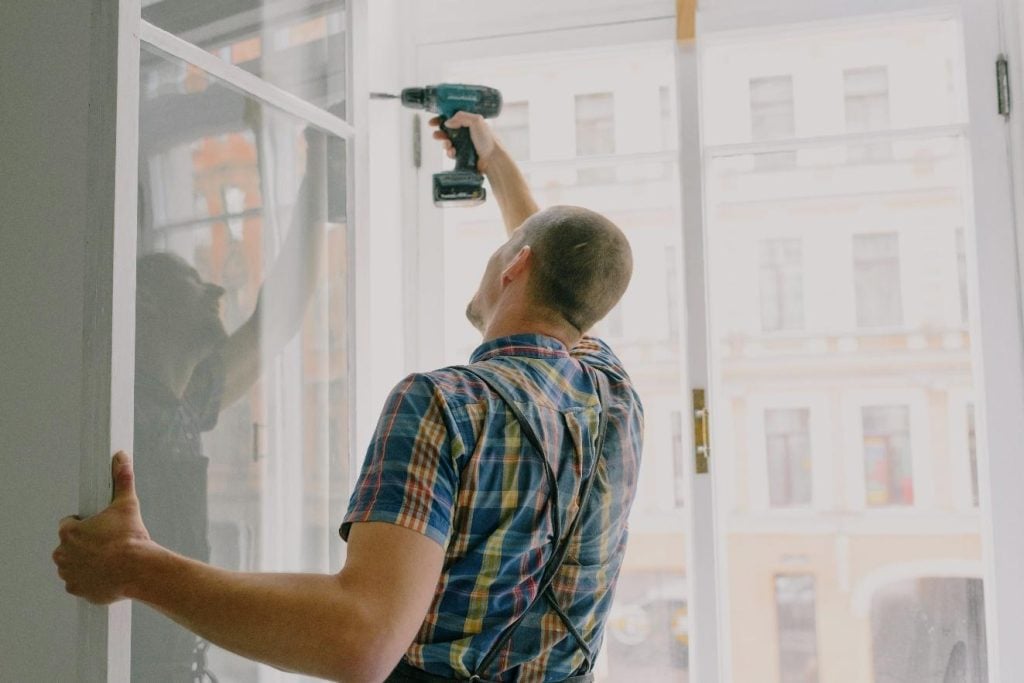
c. Aluminum Windows
These frame materials are less energy-efficient than aluminum, which conducts heat. In addition, aluminum windows are not usually preferred for aesthetic purposes as they will not appropriately fit certain designs.
The cost to replace this is an average cost of $397 to $846 per window (₱22,631.91 to ₱48,189.85), including the labor cost. Making the local window installers replace your existing frame with aluminum windows will indeed give you an upgrade in your place in terms of energy efficiency.
d. Fiberglass Windows
The whole house window replacement of fiberglass ensures a durable and resilient window installation against extreme weather conditions. Although the cost to replace or install this has an average cost of $320 to $683 per window (₱18,231.20 to ₱38,912.22), including the labor cost.
The type of glass also affects the energy efficiency, the view, and the protection it will give you and your family. Just remember, each frame and glass window material entails different window installation cost.
4. Window Installation Cost
Should you be replacing windows now? This interesting article can help you with your assessment. If you think you need an upgrade in your entire window frame, the listed cost to replace them above might help you! You may even choose among picture windows, double pane windows, single pane windows, custom windows, or oversized and specialty windows for the perfect window replacement. Even though the cost to replace windows may vary depending on the material, installing replacement windows only assures you one thing — a better home experience!
The average cost of replacing windows varies from one factor to another. Here is a short list of window installation costs for your easier reference:
- Window frame material
- Glass type and thickness
- Window size and type
- Window parts and accessories
- Window design and operation
- Brand preference
- Quantity
- Services fees which include installation, replacement cost, and other labor costs
So to answer how much window replacement costs, according to Forbes Home, it could be a minimum of $150 per window (₱8,500) On average, the cost of window installation could also range from $300 to $800 per window (₱17,000 to ₱45,000).
Overall, window replacement offers the opportunity to enhance your home’s aesthetics, save energy costs, and more. You just need to open the idea of diy window replacement or make a professional window installer do it for you.
That’s the point! To experience world-class, you need to explore various things. Perhaps you want to live in one of the most beautiful houses in the Philippines. Well, here’s the good news: Brittany Corporation offers premier house and lot properties for sale throughout the country. Your visions of the perfect dream home are just a step away. Trust Brittany, and experience Brittany living now!
Suggested Read: Air Conditioning Installation or Replacement Cost
Suggested Read: Ten Home Essentials For Your Bedroom
Suggested Read: Door Installation Cost in the Philippines
Suggested Read: Signs Its Time To Replace Your Carpet
Suggested Read: Roof Replacement Cost
Why get good air conditioning?
Who doesn’t want their luxury home in Tagaytay to be secure and sanitary?
Installing an air conditioner is how you can maintain the quality of air inside your house. It’s an essential home item. Aside from keeping your home living cool and comfortable, air conditioners circulate and filter the air to get rid of harmful contaminants like mold. With the ability to reduce irritants, having an air conditioning is beneficial for those with allergies.
That is if you install the right type of air conditioning system and maintain it at its optimum state.
What factors can affect the price of a new air conditioner?
Installation or Replacement Cost
A typical installment starts at ₱200,000 ($3,500) but this can vary on a lot of factors. If you want to install or replace an air conditioner, it’s important to know what might affect the cost of air conditioning.
Here are factors to consider when it comes to air conditioning or replacement costs:
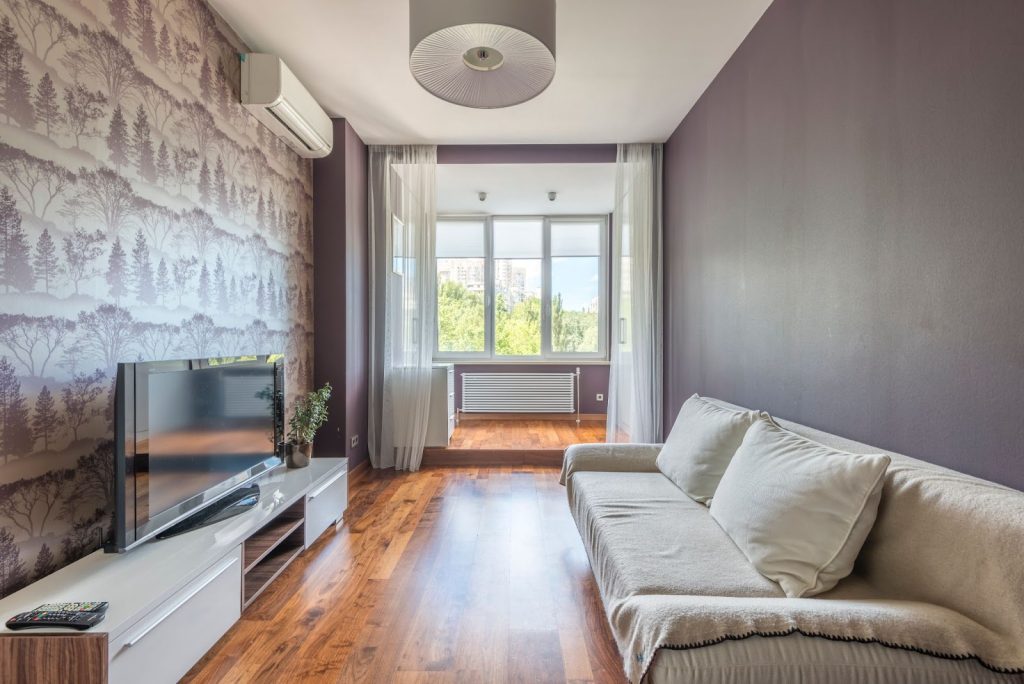
- Type of Systems
There are several air conditioning units on the market. They come in different forms, sizes, cooling, and energy efficiency features.
It’s true that the type of air conditioning system will impact the installation or replacement cost. Certain types of air conditioners require certain requirements for installation.
- Seasonal Energy Efficiency Ratio (SEER) Rating
The SEER rating is necessary for all types of Heating, Ventilation, and Air Conditioning (HVAC) systems. With air conditioners, this rating takes note of a unit’s cooling output as well as the overall electrical energy consumption over the course of a time period. The more energy-efficient a system is, the higher the SEER rating gets.
Similarly, with a high SEER rating comes a high air conditioning installment or replacement cost. Despite the hefty start, keep in mind that air conditioning systems with excellent operational efficiency and energy-saving features can save you a lot in the long run.
- Size and cooling capacity of air conditioning system
Size does matter when choosing your cooling system. The size of the air conditioning unit is connected to its cooling capacity and it is one of the important factors to take into account when selecting a new air conditioning system. Just remember that the equipment cost increases with system size so get the right one for your condominium in Davao.
- Cooling controls and size of home
Even the most beautiful houses in the Philippines consist of areas that need a different type of conditioning within various rooms. This is where cooling control and zones will affect the cost of air conditioning.
Flexible cooling is advantageous for larger homes and necessitates more cooling capacity in interior rooms and garages. Wireless thermostats, for example, can give you more control over the cooling system thanks to its technological features.
- Labor cost
The service of installing a new unit is the largest contributor to the overall air conditioning installation or replacement costs. A poorly placed system will inevitably have performance problems in the future, which will lead to additional repairs and further raise the cost of operation.
To guarantee that your new air conditioners are installed for optimum functioning, contact an HVAC expert with a credible background to do the installation.
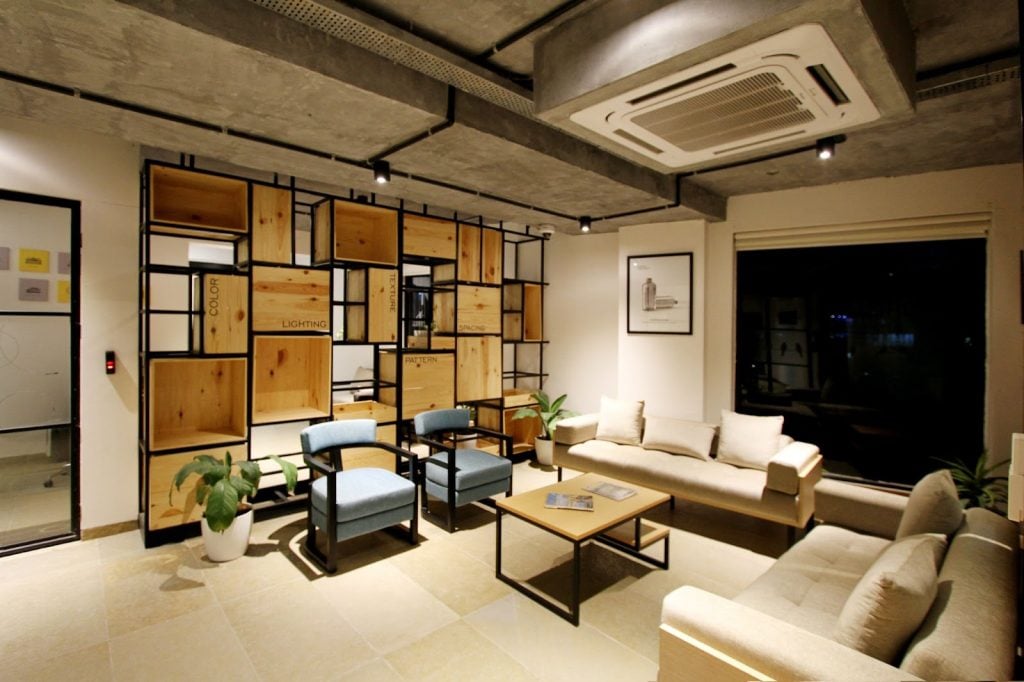
What are the different types of air conditioning?
With the aforementioned factors, it may be a difficult decision to pick a new air conditioning system for your house and lot in Daang Hari. It’s essential to pick the best one and get the most out of it.
To help you out, here are four common types of air conditioning and the air conditioner installation cost:
- Central Air Conditioning System
A central air conditioning unit is the most popular and common type of air conditioner out of all the others in this list, thanks to its effectiveness and cooling power to bigger homes, it is the go-to. Cool air is circulated by a central air conditioner through supply and return ducts inside the house. Central air conditioner cost ₱85,000 – ₱227,500 ($1,500 – $4000).
- Split Air Conditioning System
Another common kind of air conditioning is split systems. These systems have an inside handling unit and an outside compressor/condenser like that of a central conditioning system. The cost of air conditioning like this usually starts at ₱34,000 ($600).
This type can be ideal for you if you want to chill specific areas in your luxury home in Tagaytay or a condominium in Davao. Since each zone can have its own thermostat, you can regulate the temperature in each area individually. This type is also perfect for a house and lot in Daang Hari.
- Window AC Units
In a nutshell, window air conditioners are little devices that only cool a single room. By pumping cool air into a room and releasing heated air out the rear, a window air conditioner can effectively cool a small space. For those who live in compact places like a condo for sale, these kinds of units are excellent. It wouldn’t be the best choice for a larger home because it won’t cool large spaces even at maximum setting. Starting from ₱8,500 to ₱45,500 ($150 – $800), this can be an affordable air conditioning installation or replacement cost.
- Portable Air Conditioning Units
If you’re on a budget for air conditioning installation or replacement cost, portable air conditioning unit type is the way to go. This kind of air conditioner, costing ₱5,600 to ₱28,000 ($100 – $500), draws air from the space, cools it, and then blows it back into the space. A window-mounted exhaust pipe is used by the air conditioner to expel any heated air outside.
Portable air conditioners are made to chill in just one room, making it a cost-effective and adaptable alternative to condos for sale. Its easy installation will make you discover that having a portable ac unit is the simplest way to keep cool on a hot summer day.
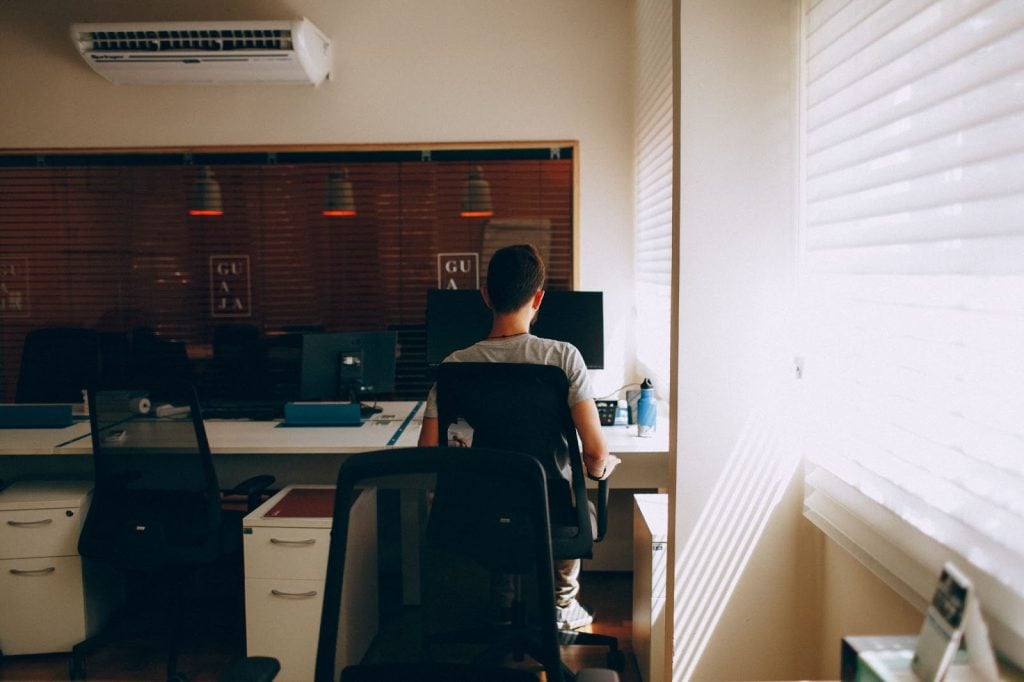
How much are units based on size?
British Thermal Units (BTUs) also known as ‘tons’ are the terms used to assess the capacity of air conditioners. To clarify, tons don’t relate to the weight of the unit but rather to the amount of air it can cool. A one-ton unit can cool one ton of air in an hour. 12,000 BTUs are about equal to one ton of cooling. The size of the area you want to cool affects the size of the air conditioning unit you’ll get. Every square foot of interior area requires, on average, 20 BTUs. Therefore, one ton with 12,000 BTUs of energy may fill a 600-foot room. A size like this may cost as little as ₱38,000 ($670).
A small system can’t cool a large house but an overly-sized unit in a small room will raise your bills. So to minimize electricity costs and maximize the power of air conditioning, choosing the right unit size is crucial.
You must conduct a thorough study in order to make an educated decision and save on the air conditioning installation or replacement cost. After all, you and your home will be the ones to benefit from a good air conditioning installment or replacement cost.
Found the ideal air conditioner? Now’s the time to get a home to cool with it. Check out Brittany Corporation’s most beautiful houses in the Philippines. They’ve got house and lot properties for sale, condos for sale, and other real estate. Pair up your new air conditioning with a new house unit with Brittany.
Suggested Read: Best Indoor Plants For Cooling Your Summer House
Suggested Read: Best Features Of luxury Homes For Summer Living
Suggested Read: Cool House: Cooling Strategies For Glass Houses
Suggested Read: Cooling Amenities Inside Your Luxury Home
Suggested Read: Roof Replacement Cost
How much can you expect to pay to have a septic tank pumped?
Pumping out a septic tank will generally set you back about P16,800
Although the costs typically vary from approximately P11,200 to P22,400, most septic tanks and pumping jobs may cost as much as P39,200 or more.
Your project’s final price tag will be determined by many factors, including the degree of difficulty involved, the local labor rate, and the availability of suitable replacement components.
Table of Contents
- Introduction
- The Basics of Septic Tank Pumping
- Factors Influencing Septic Tank Pumping Cost
- Estimating Septic Tank Pumping Costs
- Tips for Reducing Septic Tank Pumping Costs
- The Consequences of Neglecting Septic Tank Pumping
- Hiring a Professional Septic Tank Pumping Service
- DIY vs. Professional Septic Tank Pumping
- Conclusion
Welcome to our guide on septic tank maintenance costs.
In this article, we’ll give you a quick rundown on septic tank systems, stress the importance of keeping them well-maintained, and explain why understanding your septic tanks and septic tank pumping prices and costs matters. For most homeowners, septic tank systems are essential for homes not connected to city sewage septic lines.
They collect and treat wastewater right on your property. Maintaining them is crucial because neglect can lead to costly and environmental problems. Let’s get to the heart of septic tank costs and pumping costs.
We’ll break down the factors that influence these costs and provide estimates so you have a clear idea of what to expect. So, if you’re a homeowner with a septic tank or considering buying a property with one, keep reading. We’ll equip you with the knowledge to make informed decisions and ensure your septic system works smoothly without breaking the bank.
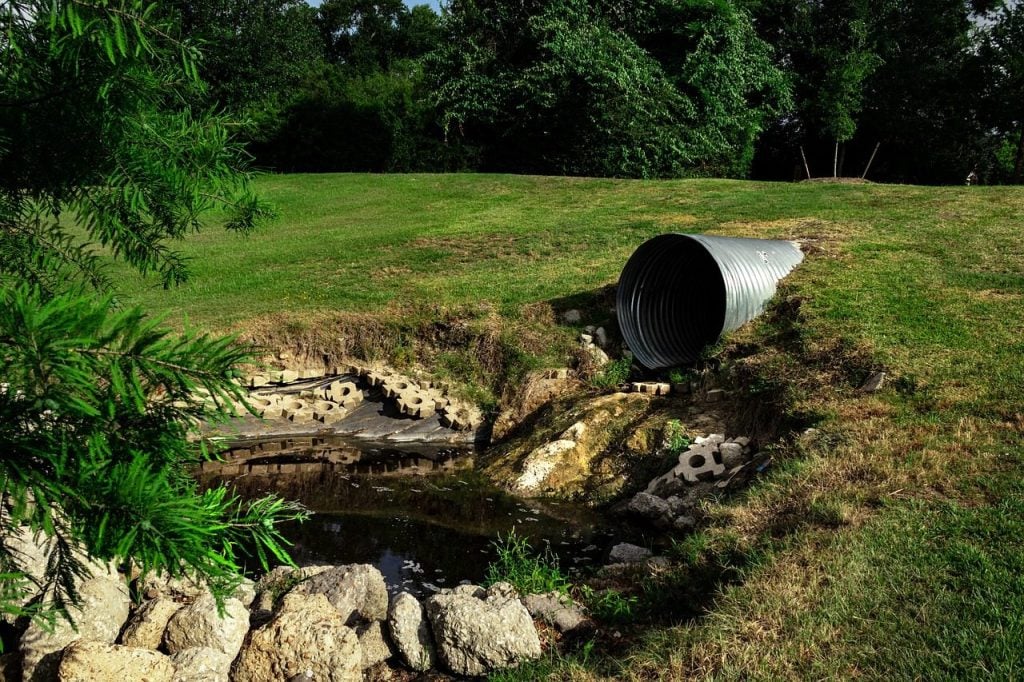
The Basics of Septic Tank Pumping
What is septic tank pumping?
It’s the process of removing the solid waste and sludge that accumulates in your septic tank over time standing water. This is done using a specialized vacuum truck.
Why is it necessary?
Regular septic tank cleaning is essential because, over time, solid and liquid waste builds up in your five-gallon septic tank. If not pumped out, it can lead to clogs, backups, and even damage to your well pump septic tank or system. Pumping keeps your system running smoothly.
Frequency of septic tank pumping
The size of the septic tank, the number of people living in the home, and the water used all affect how frequently the tank has to be pumped. On average, every 3-5 years is a good rule of thumb, but it can vary. Regular inspections can help determine the proper schedule for your specific situation.
Factors Influencing Septic Tank Pumping Cost
Tank size and capacity
More septic tank work requires the larger your tank, the more it can hold before needing pumping. Smaller tanks will fill up faster, leading to more frequent pumping and potentially higher costs.
Location and accessibility
If your tank is buried deep or in a hard-to-reach spot, it may require more effort and time for professionals to access and pump it, increasing its full cost.
Depth of the tank
Deeper tanks may need more specialized equipment and labor for routine pumping sessions, making the process more expensive.
Age and condition of the system
Older or poorly maintained systems may require extra pumping care, potentially raising costs.
Soil type and groundwater level
If you have challenging soil or a high groundwater level, it can affect the ease of pumping and increase costs.
Local regulations and permit fees
Some areas have specific regulations and may require permits for septic tank pumping, which can add to the overall cost.
Estimating Septic Tank Pumping Costs
The cost of septic tank pumping varies widely. On average, it can range from P11,200 to P33,600 or more. The factors we discussed earlier, like tank size and location, play a significant role in determining where your costs fall within this range.
To get a rough estimate, consider your tank size and pumping frequency. Smaller tanks and more frequent pumping will generally cost less per visit. Larger tanks or infrequent pumping can increase your overall expenses.
Remember that septic tank repairs and pumping costs may not be the only expenses. You might also encounter unexpected repair costs, landscaping expenses if your yard is disturbed during pumping, and the cost of regular inspections to ensure your system is functioning correctly.
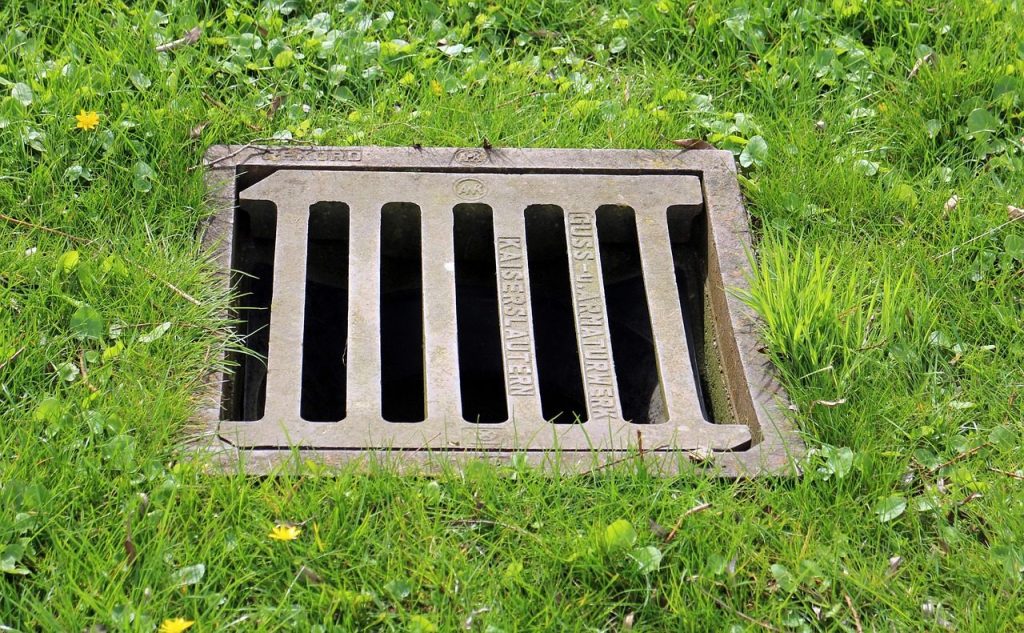
Tips for Reducing Septic Tank Pumping Costs
Regularly maintain your septic system. This includes pumping it when needed and getting it inspected and maintained by professionals. Preventing problems can save you money in the long run.
Use water efficiently to avoid overloading your septic system. Fix leaks promptly, and consider using low-flow fixtures and appliances to reduce water consumption. Don’t flush harmful chemicals, grease, or non-biodegradable items down the drain or toilet.
These can damage your system and lead to costly repairs. Schedule regular inspections to catch septic tank issues early. It’s more cost-effective to address minor problems before they become major repairs. By following these tips, you can keep your septic system running smoothly and minimize the need for frequent and expensive pump-outs.
The Consequences of Neglecting Septic Tank Pumping
Septic system failures
When you don’t pump your septic tank regularly, it fills up with solid waste, causing clogs and blockages. This can lead to backups in your plumbing municipal sewer system and even a complete septic system failure. Imagine the inconvenience and expense of having slow draining, no working toilets!
Environmental and health risks
Neglected septic systems can leak sewage into the environment, contaminating groundwater and nearby water bodies. This poses health risks to you, your family, and your neighbors, not to mention the harm it does to the environment.
Costly repairs and replacements
When a septic system fails due to neglect, the repairs or replacements can be extremely costly. It’s not just about pumping the tank anymore; you might need to replace the entire system, which can cost thousands of dollars.
Hiring a Professional Septic Tank Pumping Service
Hiring a professional service is crucial when it’s time to have your septic tank pumped.
Here’s how to go about it:
Qualities to look for in a reputable service provider
Choose a company with a track record of septic system maintenance expertise. Ensure they have the necessary licenses and certifications. Read reviews and seek recommendations from neighbors or friends.
Verify they have liability insurance to cover any potential damages during the job. Check that they have well-maintained, modern pumping equipment.
Obtaining and comparing quotes
Reach out to multiple service providers and request quotes. Be clear about the specifics of your septic system and the septic tank services you need. Then, compare the quotes to find the best value for your money.
Remember, the cheapest option may not always be the best.
Questions to ask the service provider
Get a detailed breakdown of the cost estimate. Ask about their availability and how quickly they can perform the job. Inquire about their pumping process and any additional services they offer, like inspections. Ask how they handle and dispose of the waste.
Find out if they offer any guarantees or warranties on their work.
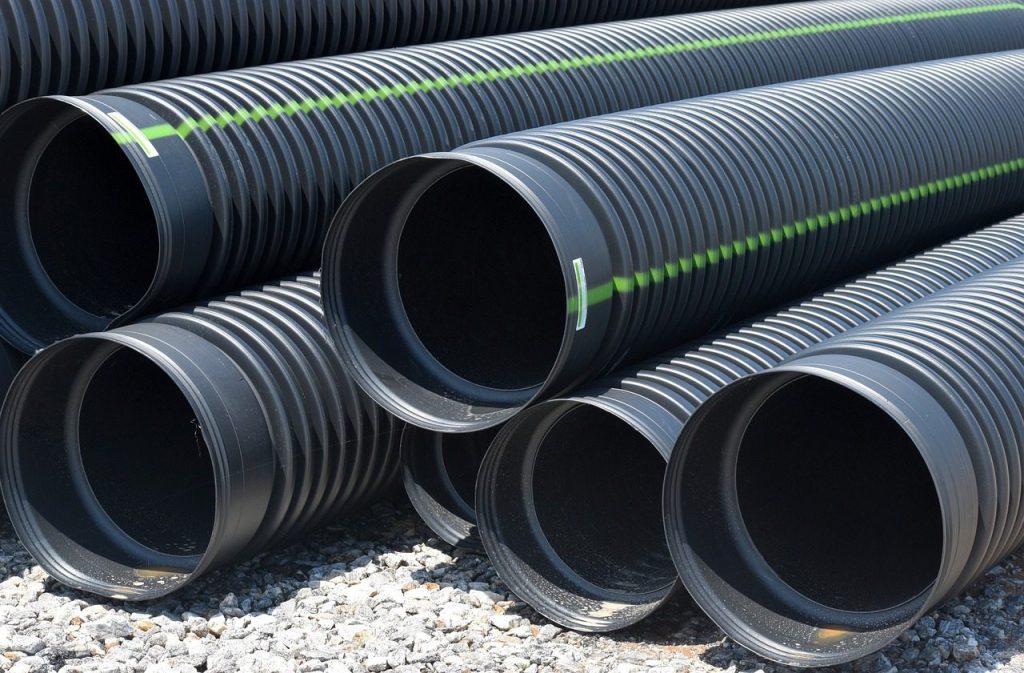
DIY vs. Professional Septic Tank Pumping
Pros and cons of DIY pumping a septic tank
Pros:
Cost Savings: Doing it yourself can be cheaper upfront.
Hands-On Experience: You gain a better understanding of your septic system.
Cons:
Complexity: Pumping is more complicated than it seems, and mistakes can lead to costly issues.
Safety Risks: Handling waste and equipment can be hazardous.
Time-Consuming: DIY pumping takes time and effort.
Risks and benefits of professional services
Benefits:
Expertise: Septic tank professionals have the knowledge and experience to do the job right.
Efficiency: They work quickly and efficiently, minimizing disruptions.
Safety: Trained technicians handle waste and equipment safely
Risks:
Cost: Professional services can be more expensive upfront.
Dependence: You rely on others’ schedules.
Safety considerations
If you choose DIY, prioritize safety:
Protective Gear: Wear gloves and eye protection.
Ventilation: Ensure good airflow in the work area.
Disposal: Follow proper waste disposal guidelines.
DIY may save money but is riskier and more time-consuming.
Professionals offer expertise, efficiency, and safety, making them a reliable choice for septic tank pumping.
Your decision should align with your comfort level, skills, and willingness to invest time and effort.
Conclusion
Remember that regular septic tank pumping is not just a chore; it’s crucial to maintaining a healthy and functioning septic system. Neglecting it can lead to costly problems, system failures, and environmental hazards.
While the cost of pumping your septic tank and pumping may seem like an expense, think of it as an investment in the longevity of your system. By pumping your tank on schedule and addressing any issues promptly, you can save money in the long run by avoiding major repairs or system replacements.
We encourage all homeowners with septic systems to prioritize regular and proper maintenance. This includes regular pumping out, inspections, and following best practices for efficient water usage and waste disposal.
By taking care of your septic system, you ensure the health and safety of your home and the environment. A well-maintained septic system means peace of mind and fewer unexpected expenses. So, don’t forget to schedule that septic tank pumping and keep your system in excellent working condition.
If you and your family want to savor the tranquility, quiet, and charm of San Francisco while surrounded by luxurious amenities.
Suggested Read: A Guide To Keeping Your Swimming Pools Safe & Clean
Suggested Read: A Guide To Water Features For Luxury Homes
Suggested Read: The Most Expensive Things in the World Today
Suggested Read: Water Heater Installation Cost
Suggested Read: Septic Tank Installation Cost
How much does it cost to have plantation shutters installed?
Plantation shutters, including installation, typically cost about P112,000.
High-end projects may cost upwards of P252,000, compared to the average price range of about P56,000 to P168,000.
The final price tag will be established by factors such as the quantity of shutters you need, the quality of those materials, and the going rate for labor in your region.
Table of Contents
- Introduction
- Factors Affecting Plantation Shutter Costs
- Material Costs
- Size and Dimensions
- Style and Design
- Customization Options
- Installation Costs
- Location and Regional Variations
- Tips for Cost Savings
- Conclusion
Plantation shutters are elegant window coverings that consist of horizontal slats or louvers. They are famous for their timeless beauty and practicality in controlling natural light and privacy.
In interior design, plantation shutters are like the cherry on top of a sundae. Shutters add a touch of sophistication and versatility to any room. Whether you have a traditional or modern aesthetic, these shutters can complement your style seamlessly. This article will delve into the nitty-gritty details of plantation shutter costs.
You’ll learn about the factors influencing the prices, such as the materials used, size, design options, and installation. We’ll even touch on how your location can impact the overall cost. So, if you’re considering plantation shutters for your entire home and want to make an informed decision, keep reading.
We’re here to help you navigate the cost aspects and make your window treatment dreams a reality.
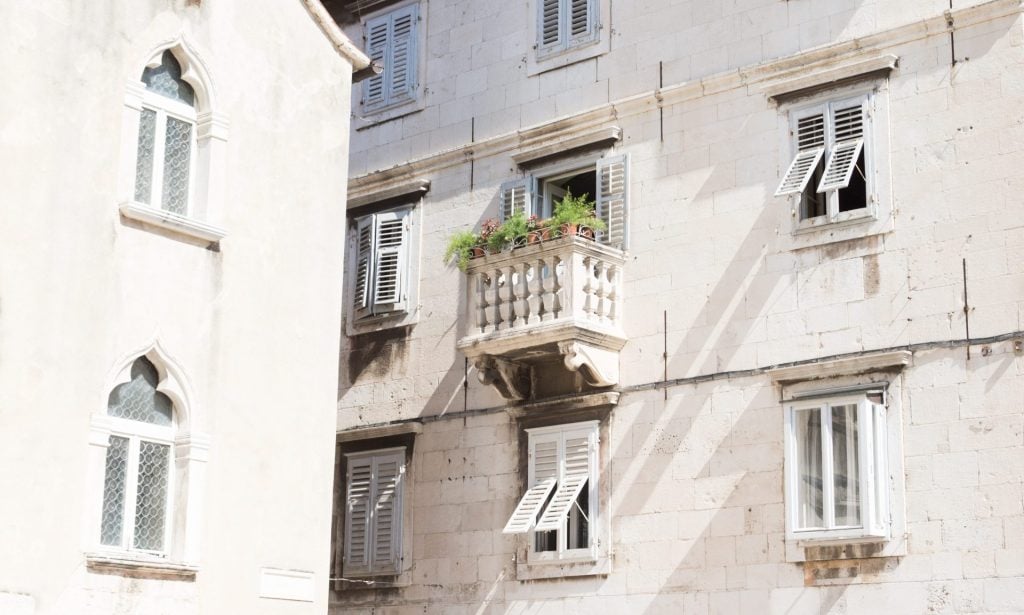
Factors Affecting Plantation Shutter Costs
Material Choices
- Wooden shutters exude timeless charm and come with various price points, depending on the mounting type of wood used.
- Vinyl shutters are a budget-friendly option with low maintenance, making them cost-effective.
- Composite shutters offer the look of wood without the price tag, striking a balance between affordability and aesthetics.
Size and Dimensions
The size of a window frame for your windows significantly affects the overall cost.
Large windows require more material, which can increase expenses.
Style and Design
Your style and design options, such as louver size, panel configuration, and special features, can affect costs. More intricate designs may be pricier.
Customization Options
Customization, like paint finishes, hardware choices, and additional accessories, can add to the final bill. Be mindful of your preferences.
Installation Costs
Deciding between DIY shutters and professional installation impacts the budget. Hiring professional installers may involve additional fees.
Location and Regional Variations
Remember that where you live can influence costs. Prices may differ based on regional factors and the availability of materials and labor.
Material costs for window shutters
Wood Plantation Shutters
Wood shutters offer a classic look and excellent insulation. However, they can be more expensive, require maintenance, and may not be ideal for humid environments. On average, wooden plantation shutters can cost between P1,120 and P2,520 per square foot, depending on the wood type and customization.
Vinyl Plantation Shutters
Vinyl shutters are affordable, easy to maintain, and moisture-resistant. However, they may lack the natural beauty of solid wood and can’t be customized as extensively. Vinyl plantation shutters are generally more budget-friendly, ranging from P840 to P1,680 per square foot.
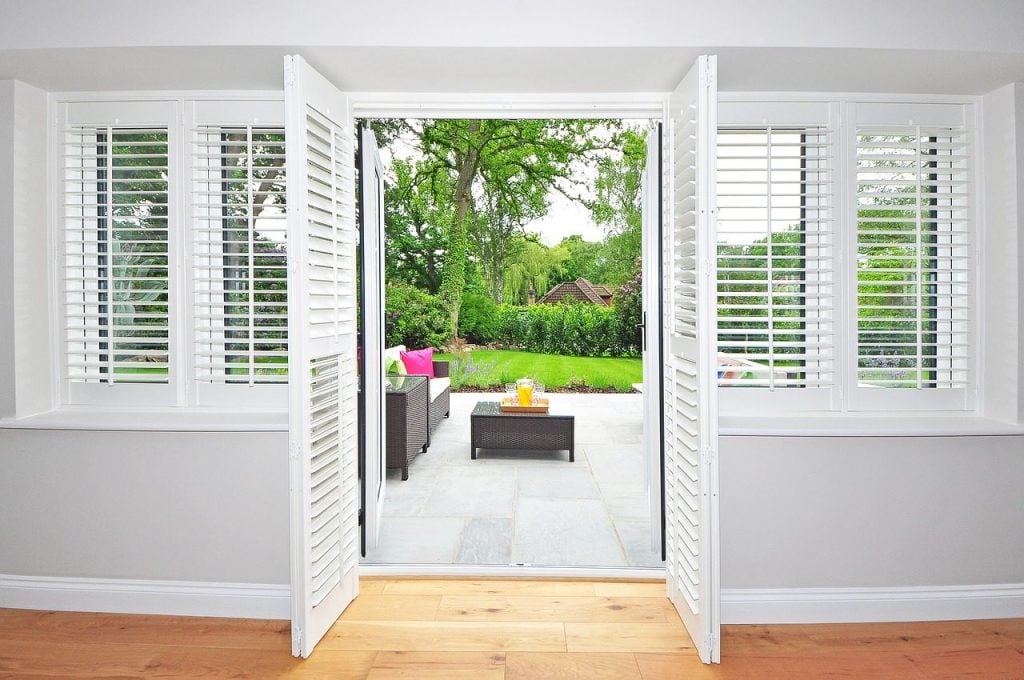
Composite Plantation Shutters
Composite window shutters can provide a wood-like appearance with durability and moisture resistance. They fall between faux wood and vinyl in terms of cost and customization options. Composite plantation shutters typically range from P1,120 to P1,960 per square foot.
Size and Dimensions
Standard vs. Custom Sizes
These are pre-made shutters designed to fit standard window dimensions.
They are usually more affordable because they are mass-produced.
Custom-made shutters are tailored to fit your specific window measurements.
While they offer a perfect fit, they often come at a higher cost due to the extra effort and materials required.
Impact on Cost
The size of your windows directly impacts the cost of plantation shutters.
More oversized windows demand more materials, driving up the price.
Custom sizes also increase costs because of the precision and unique requirements involved.
Measuring and Calculating Costs
When planning your purchase, accurately measure your windows or hire a professional.
Calculate the square footage of each window to estimate costs more precisely.
Remember that customization and unique shapes may require additional measurements and budget considerations.
Style and Design
Louver Size and Shape
The size of the horizontal slats, or louvers, can vary.
Larger louvers provide a clearer view when open but may cost more due to increased material usage.
Panel and Bay Windows Configuration
Consider how you want the panels and bay window to open and close.
Different configurations, like bi-fold, tri-fold, or sliding, can impact the price based on complexity and hardware requirements.
Special Features
Features like hidden tilt rods for a cleaner look or motorization for remote control add convenience but also come at an additional cost.
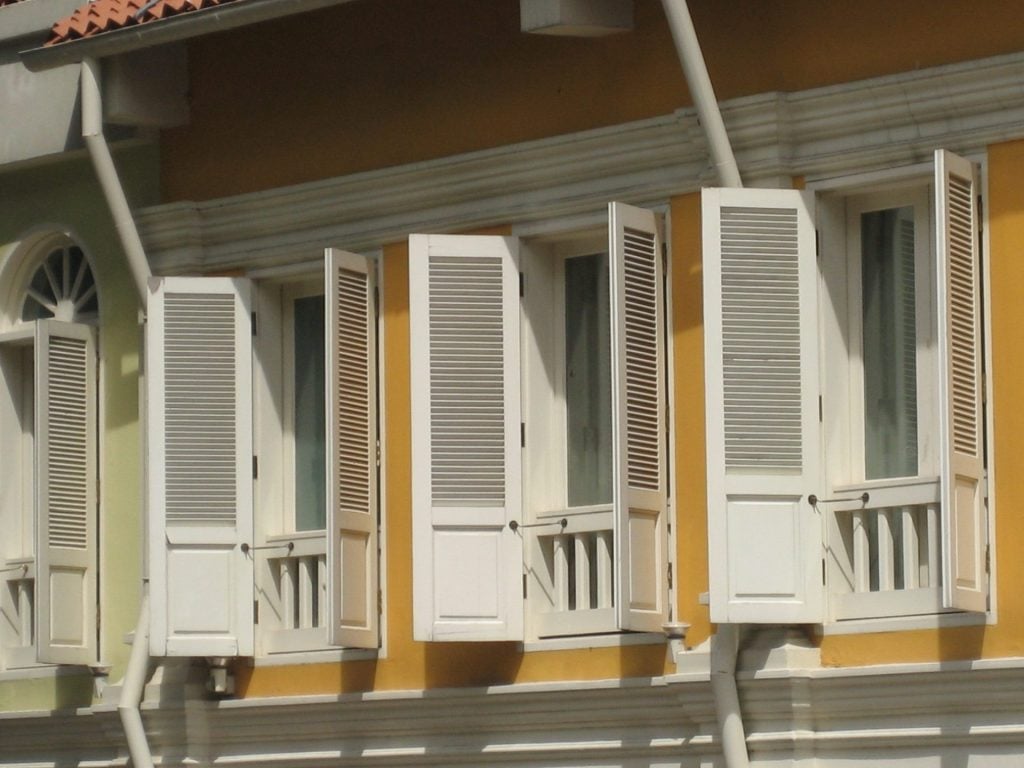
Effect on Pricing
Your style and design choices can significantly influence pricing. More elaborate designs, larger louvers, and additional features may increase costs. However, these choices also allow greater personalization to match your aesthetic preferences.
Customization Options
Choose from a variety of paint colors to match your interior decor. Opt for a stain finish to highlight the natural wood grain. Stains often cost more than paint due to their intricate application process.
Select the hardware that suits your style, such as hinges, knobs, or pulls. High-quality or decorative hardware may come at an additional cost. Consider decorative frames, arches, or other accessories to enhance the overall look of your shutters.
These can add both elegance and expense. While customization options offer versatility, they can increase costs. Keep your budget in mind when selecting finishes, hardware, and accessories.
Prioritize elements that align with your vision and are within your budget.
Installing estate shutters Costs
Installing shutters can save money but requires skills, tools, and time. Ensure you’re comfortable with the process before attempting to do it yourself. Hiring a professional guarantees a proper installation, reducing the risk of mistakes.
However, it comes with added costs. Consider hiring a professional installer if you lack confidence in your DIY estate shutter installation skills. They’ll ensure the install shutters are fitted precisely and work correctly.
Installation charges can vary based on several factors:
- Number of windows: More windows mean higher labor costs.
- Window size and shape: Complex shapes may require more time and expertise.
- Location: Regional labor rates can affect the total cost.
- Additional work: Repairing or modifying existing window frames may incur extra charges.
Location and Regional Variations
Where you live can significantly impact how much you’ll pay for plantation shutters.
Areas with a higher cost of living tend to have higher prices for goods and services, including home improvements like shutters.
The strength of the local economy can affect the availability of materials and labor, affecting pricing.
Regions with extreme weather conditions may require specific shutter materials, impacting costs.
Before making a purchase, comparing prices in different regions or even countries is a good idea.
You might find that ordering custom shutters from a location with lower manufacturing costs can save you money, even with shipping factored in.
Tips for Cost Savings
Before you start shopping, set a clear budget for your project. Decide how much you’re willing to spend, and stick to it. Having a budget in mind will help you make informed choices and avoid overspending.
Watch for discounts, promotions, and sales from shutter manufacturers or local retailers. These can provide significant savings on your purchase. Subscribe to newsletters or follow social media pages of shutter companies to stay updated.
Don’t rush into a decision. Shop around and get quotes from multiple suppliers or retailers. Comparing prices and offerings will help you find the best deal without sacrificing quality. Consider a DIY installation if you’re handy and have the necessary skills and tools.
It can save installation costs, but be sure you’re confident in your abilities to ensure a proper fit and finish.
Conclusion
We’ve explored various factors affecting plantation and plantation shutter cost and installation costs, including materials, size, style, customization, installation, and regional influences. Each of these aspects plays a crucial role in determining the final price tag of your window treatment. Understanding these factors and considering your needs and budget is essential for making an informed decision.
Plantation shutters are not just window coverings but an investment in your home’s aesthetics, comfort, and value. We encourage you to explore plantation shutters as a valuable addition to your home. They offer timeless beauty, privacy, and light control. With the right choices and careful budgeting, you can enjoy the benefits of these elegant window treatments while managing costs effectively.
If you are searching for a modern and elegant house with beautiful window designs, visit the Southern American-themed luxury house Brittany Corporation Philippines.
Suggested Read: Vinyl Fence Installation Cost in the Philippines
Suggested Read: Davao Regional Development Plan 2023-2028
Suggested Read: Fancy Luxury Holiday Home
Suggested Read: New Spots to Visit in Laguna
Suggested Read: The Beauty of the Golden Hour
Villar City is a cutting-edge urban design showcase project and one of the Philippines’ most visited tourist destinations.
This metropolis is unlike any other in that it successfully combines high-end amenities with practicality and eco-friendliness.
Villar City is one of the upscale residential projects built by the renowned Brittany Corporation, the biggest project, which is representative of their dedication to developing superior neighborhoods.
Villar City is more than just a place to live; it’s a vision of an ideal lifestyle.
In this article, we will delve into the key reasons why Villar City is perfect for its residents.
From its strategic location to its meticulously planned design, from a rich array of amenities to a steadfast commitment to sustainability, we will explore how this city redefines the concept of urban living.
Join us on this journey to discover why Villar City is the epitome of residential excellence.
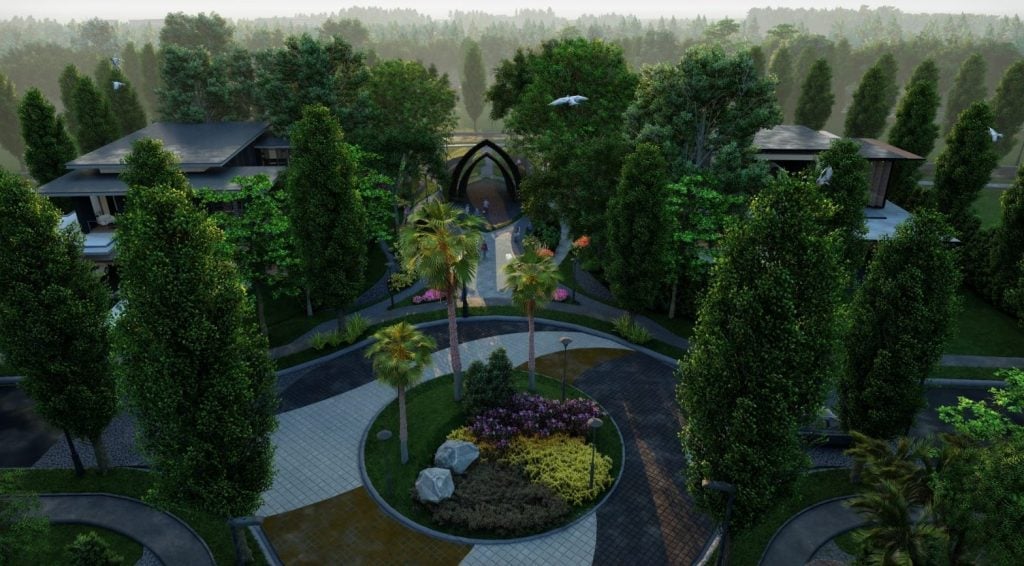
Location and Accessibility
Because of its central position, Villar City is a hub of accessibility and possibility. Its great location means that its occupants may enjoy both urban conveniences and scenic surroundings.
Villar City is very convenient because of its convenient location. It’s convenient for residents to go to work, school, and the hospital because of its proximity to main thoroughfares and transit hubs.
Villar City’s convenient location improves residents’ quality of life by reducing the amount of time spent traveling to and from work.
This community’s convenient location means its residents may spend less time commuting and more time taking advantage of the many facilities available to them.
Master-Planned Community
A master-planned community is a long-term strategy for urban planning and land use that incorporates residential, commercial, recreational, and green areas into one holistic and environmentally friendly layout of land area.
When it comes to planning and design, Villar City is a model. The location of parks and other facilities in the new central business district, as well as the design of the surrounding streets, contribute to the overall attractiveness of the area.
Such careful forethought improves people’s quality of life. It assures effective use of land, encourages inhabitants to develop and feel a part of the community, and creates an environment that is secure, attractive, and well-organized, all of which contribute to increased happiness and contentment.
Amenities and Facilities
Villar City provides its people with a wide variety of amenities and facilities to meet their requirements and interests. These include modern fitness centers, swimming pools, community centers, shopping malls, and playgrounds.
The planning of Villar City prioritized the inclusion of parks and open places. Large parks, jogging paths, and peaceful gardens provide locals a place to relax and rejuvenate, all while encouraging them to go outside and reconnect with nature.
These conveniences are essential to encouraging a healthy way of life. They promote a better and more enjoyable way of life for locals by providing opportunities for exercise, socialization, and leisure.
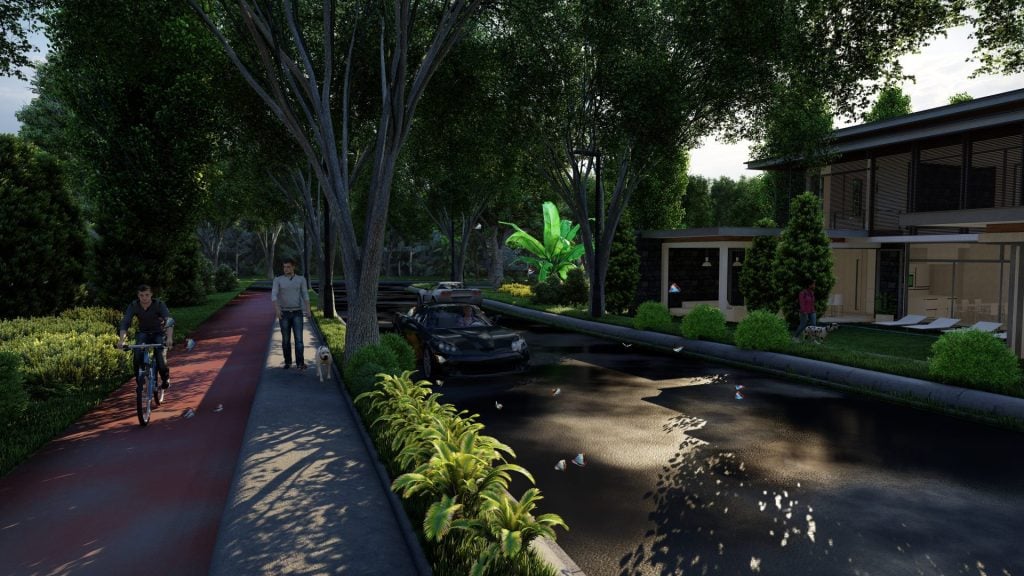
Sustainability and Eco-Friendly Features
Energy-efficient lighting, water-saving fixtures, and garbage recycling initiatives are just a few examples of the eco-friendly infrastructure that Villar City proudly boasts.
Villar City is maintained with sustainability in mind. To that end, eco-friendly business practices, including recycling and composting, as well as middle-income residential projects such as installing solar panels and LED streetlights, are being implemented.
Living in a sustainable community is good for people and the planet. The energy bills, indoor air quality, and the carbon footprint of the villar city, perfect for residents, all go down.
The lower use of resources and smaller ecological imprint that results make Villar City a victory for the world as well.
Safety and Security
With round-the-clock monitoring, guarded entry points, and highly-trained security professionals, Villar City provides a safe haven for its citizens.
The safety of the community’s inhabitants is of utmost importance. Villar City’s dedication to security allows its citizens to go about their everyday lives, create vibrant communities, and raise healthy families without fear of harm coming to them.
Safety elements that stand out include 24-hour monitoring, enough lighting, and neighborhood patrols. These efforts improve Villar City as a whole and help its citizens feel more secure in their community.
Community and Lifestyle
Villar City encourages its people to get to know one another and form meaningful connections via its many community activities, meetings, and shared places.
Cultural festivals, sporting events, and art exhibits are just some of the leisure opportunities available in the city. There are several options for residents to learn about and develop their passions.
Villar City offers a dynamic and rewarding family way of life to its citizens. It’s a place where people care for one another, where different cultures are honored, and where there’s something for everyone to do, so residents may all have complete and happy lives.
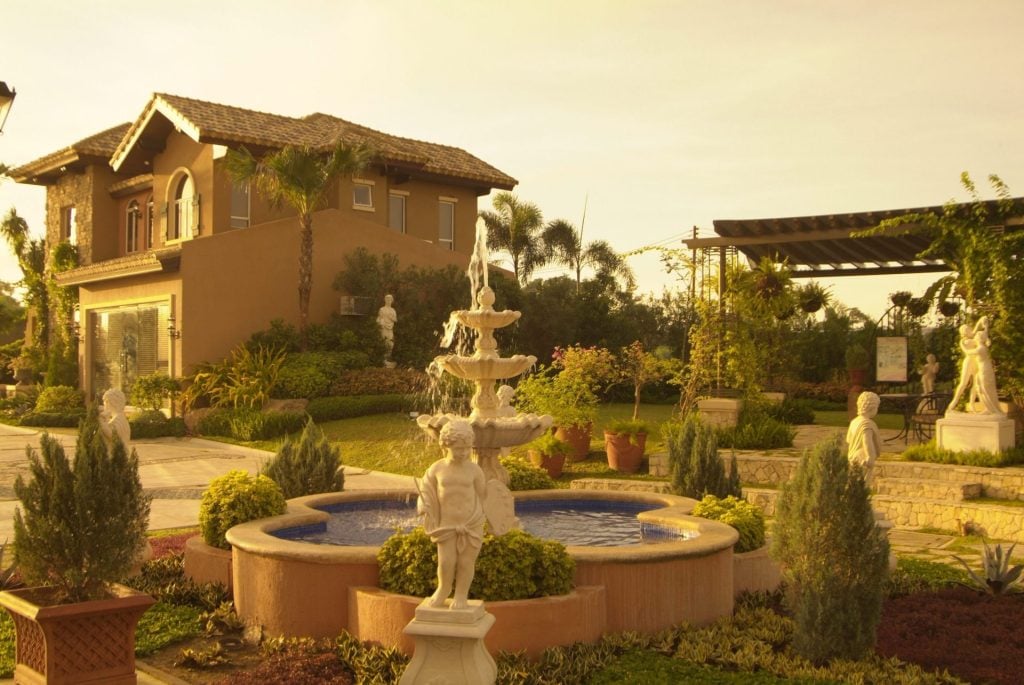
Investment Potential
There is a good chance that real estate market values will rise in Villar City. Because of its advantageous location, thoughtful design, and dedication to sustainability, other property market values are certain to rise.
Its investment potential is expected to grow as a result of nearby infrastructure development initiatives, including new transit hubs, residential towers, and retail centers.
It is a promising investment prospect because of its proximity to Metro Manila and the promise of future growth and development. It’s a great place to live and invest if you’re thinking about your future financial stability.
Testimonials and Resident Experiences
Recent Villar City transplants have spoken well of the neighborhood, complimenting its conveniences, security, and friendly locals.
Stories of new friendships, exciting community activities, and the ease of access to necessities are just a few examples of the good times that may be had in such a location. These tales highlight the true happiness and contentment that people in Villar City experience.
The tale is strengthened by the inclusion of true accounts from villar-noted locals, who show that Villar City is more than simply a place to live; it’s a place where people’s hopes and ambitions may come true.
Evia Lifestyle Center: One of the New Central Business District
The Evia Lifestyle Center in Las Piñas, Philippines, also known as Vista Lifestyle Center, is a sophisticated and popular lifestyle attraction.
Vista Land Lifescape’s busy hub has a full shopping mall with a great selection of retail stores, boutiques, sprawling malls, and specialized shops for shopaholics.
Many restaurants, cafés, and food vendors in the trading center provide local and foreign cuisine. With its modern theaters and live performance venues, the center offers entertainment.
The Evia Lifestyle Center or Vista Mall is a popular destination for shopping, eating, and entertainment in one place due to its lively environment and extensive options.
Villar City & Forresta Villar Land | Las Piñas & Cavite
For more information about Villar Land and other exceptional developments, visit Brittany Corporation’s official website or contact their dedicated team.
If you get the chance to move to Villar City, you should take it. If you’re interested in Brittany Corporation’s available properties but haven’t seen them in person, we encourage you to contact them immediately to schedule a tour.
Conclusion
Overall, Villar City by Brittany Corporation is an excellent place to live because of its convenient location, thoughtful design, wide range of facilities, commitment to sustainability, stringent safety precautions, and thriving neighborhood.
It is excellent because it provides its citizens with a location to call home and a way of life that places a premium on comfort, convenience, and prosperity.
We hope you’ll seriously consider Villar City as you look for a new place to call home.
This neighborhood is more than simply a place to lay your head at night; it’s a place where your hopes and aspirations may flourish and where you can discover the ideal balance between security and possibility.
Suggested Read: Explore Villar City’s Sustainable Properties in Daang Hari
Suggested Read: Accessibility Features That Make Villar City Stand Out
Suggested Read: Why Villar City is the Ideal Place for Retirement
Suggested Read: Why Forresta Has The Best Green Spaces
Suggested Read: Sustainability In The Real Estate Industry
